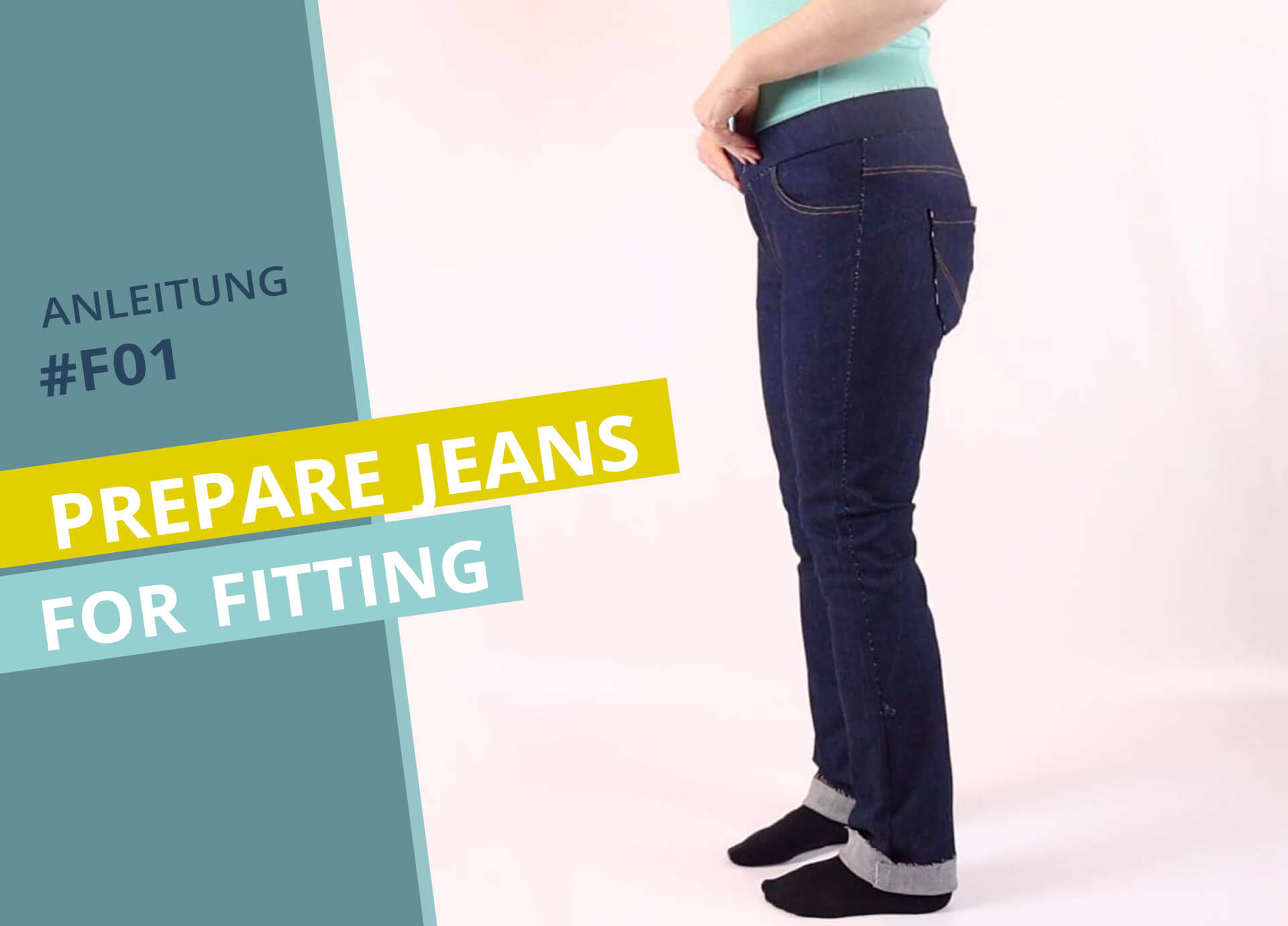Preparing jeans for fitting #F01
In the following instruction, I explain step by step via video and illustrated text instructions how I prepare a pair of jeans for fitting. Even with made-to-measure trousers, it is highly recommended that you try them on before finishing them. Customers are even requested to come to the tailor for a fitting before they can pick up their finished garment. For this reason, our patterns also include wider seam allowances in some places, which can be used to adjust if necessary. To get a realistic impression of how the finished trousers will fit, it is important to sew on the waistband to try them on. This is especially true for the shaped waistband, as the circumference at the bottom edge is much larger than at the top edge. Have fun!
Video instructions:
The video instructions are currently only available in German. Via settings you can have YouTube display the subtitles in your language of choice.
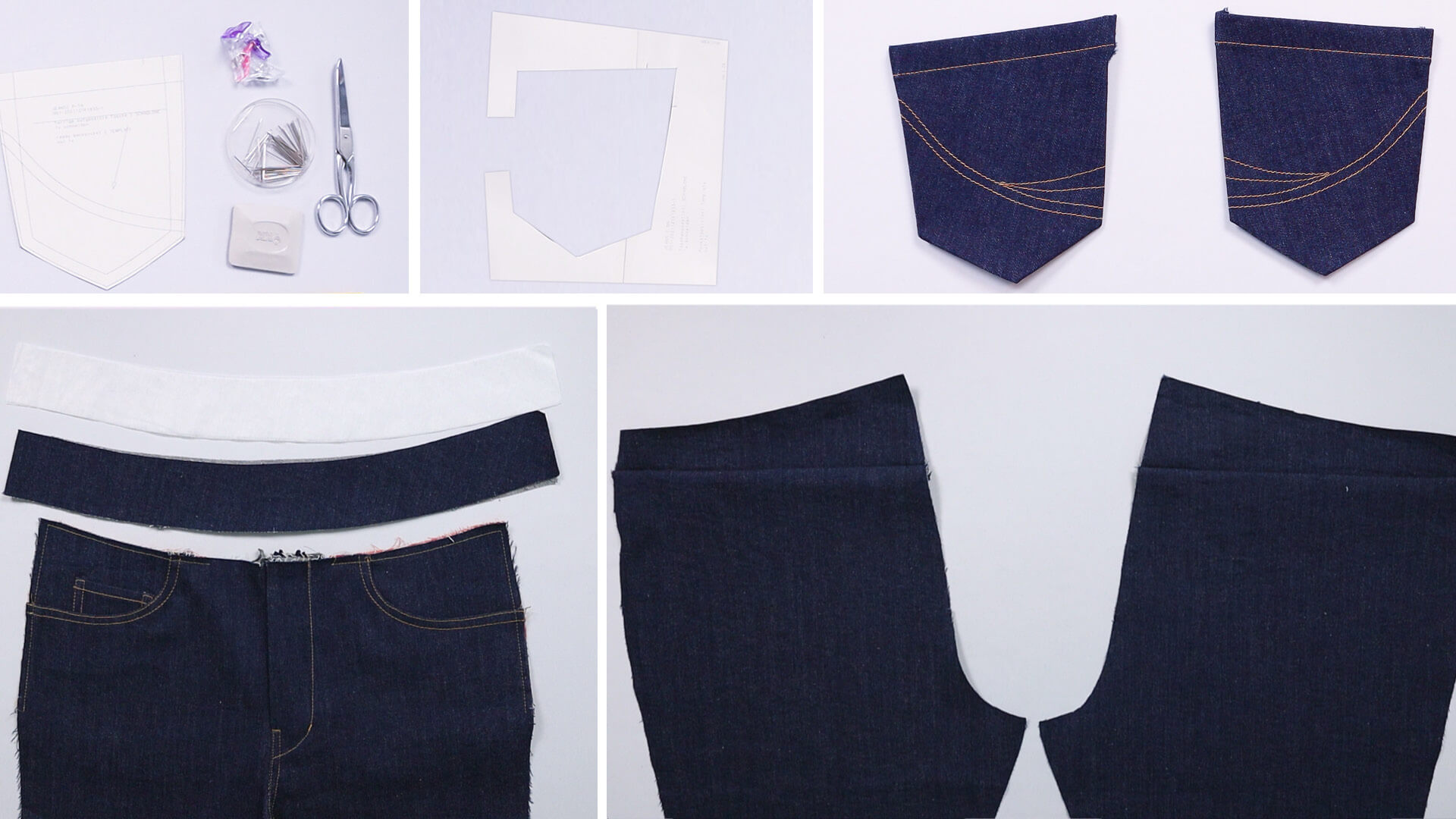
Pattern pieces made from main fabric:
- front pieces with integrated fly and pockets
- back pieces (HH) with the yoke already sewn on, if available
- both waistband strips (B)
- interfacing for the waistband strips (EB)
- prepared back pockets (TAH), alternatively 2 x the paper template of the finished pocket (P-TAHF)
Tools and aids:
- the paper template for pocket position (P-TAHP)
- pins and/or clips
- scissors
- tailor’s chalk or marking pen
2. Press the yoke seam and close the back seat seam
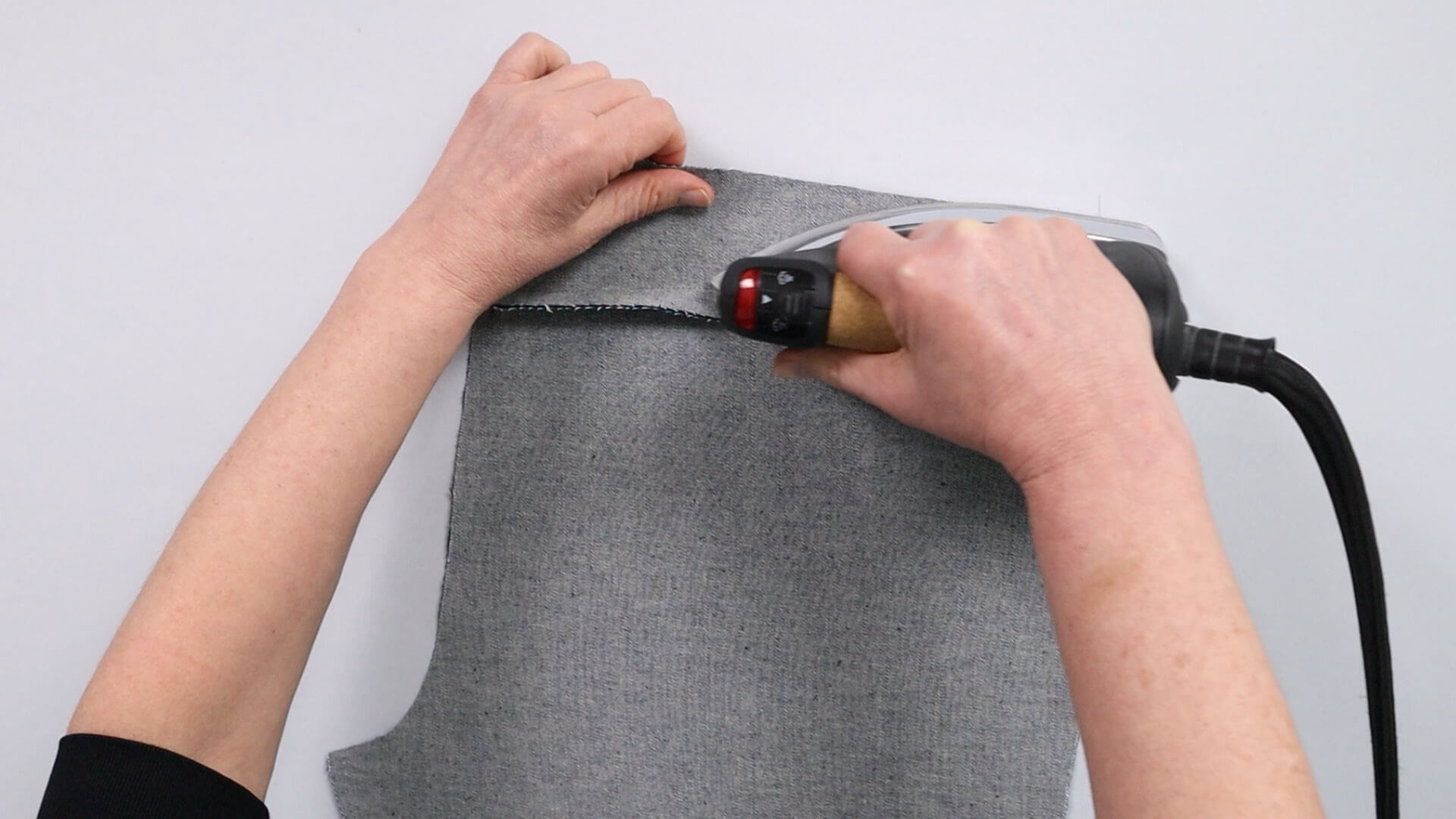
First, I press the seam allowance of the yoke seam downwards, as I want to topstitch the seam in this direction later.
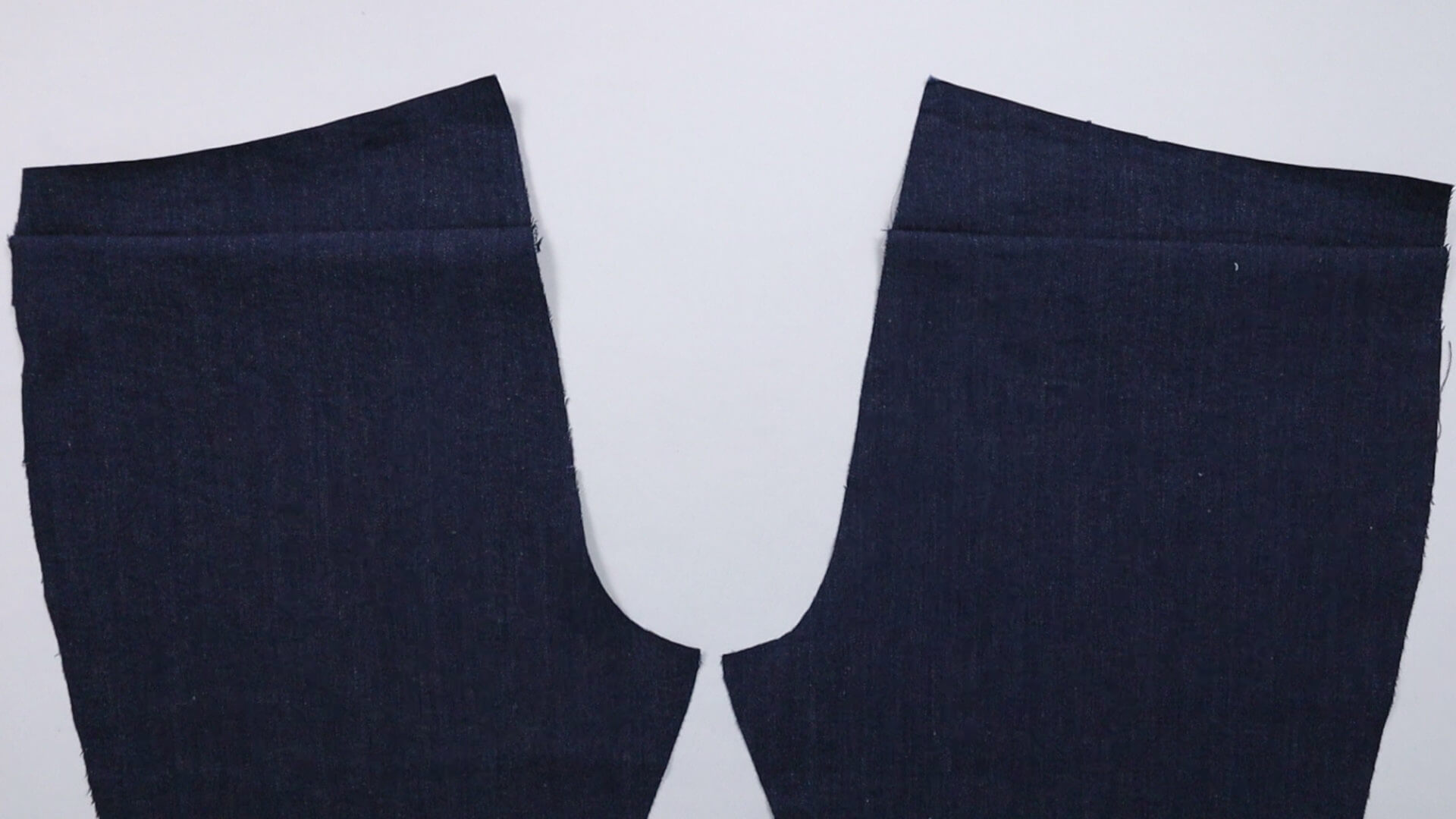
The seat seam is then joined. To do this, I lay the back pieces right sides together and pin them together.
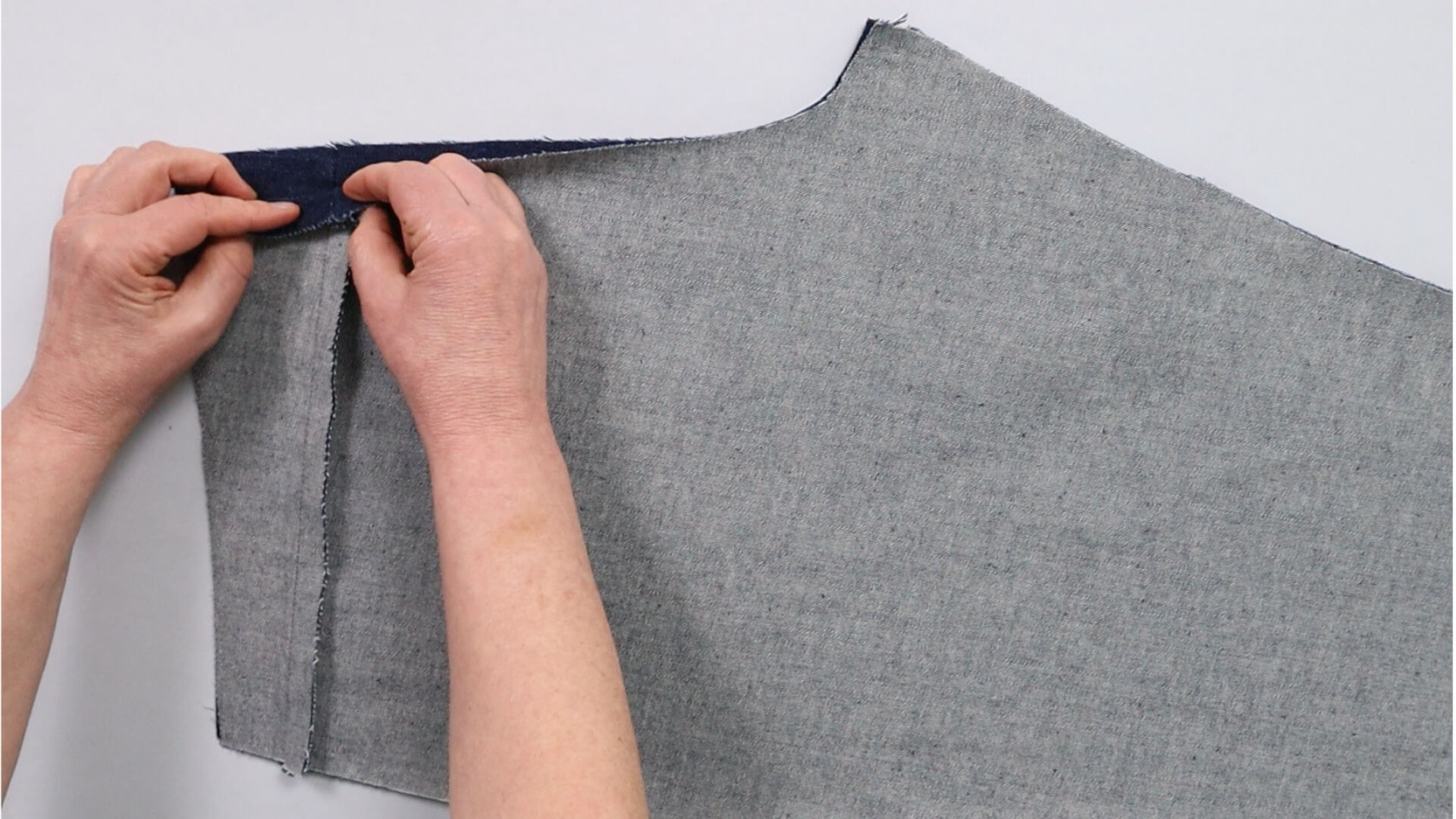
If the back trousers have a yoke or dividing seam, I make sure that they meet exactly.
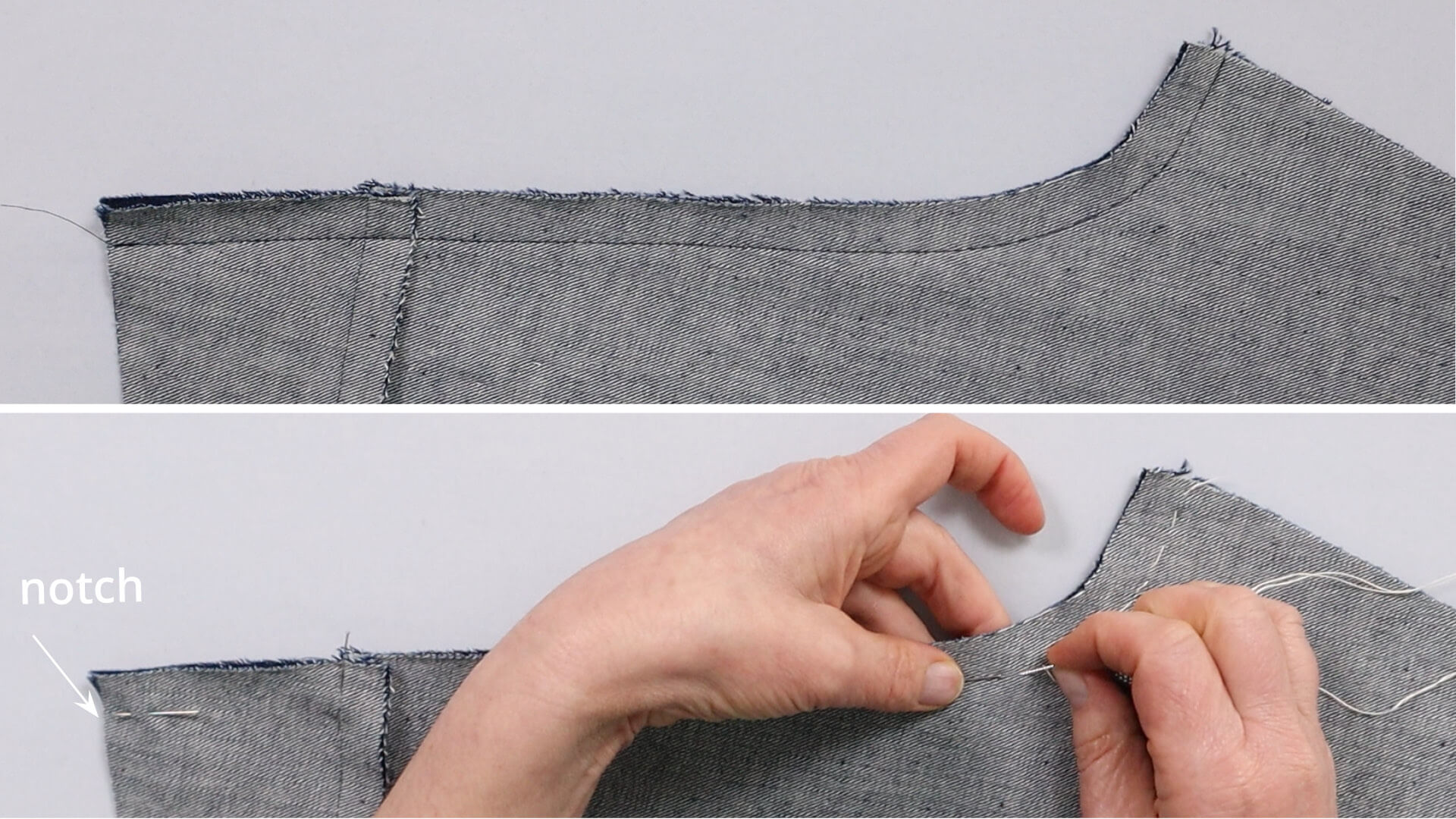
This seam is now joined with a long machine stitch or a basting seam. The advantage of a basting stitch is that it can be undone more quickly and the needle stitches are usually not visible afterwards.
I recommend the long machine stitch for tight-fitting trousers, as this provides more stability than hand basting.
If there is a notch for the seam allowance on the waistband edge, please note the corresponding measurement. Otherwise, the standard seam allowance of 10 mm applies.
3. Mark the back pocket position for the fitting
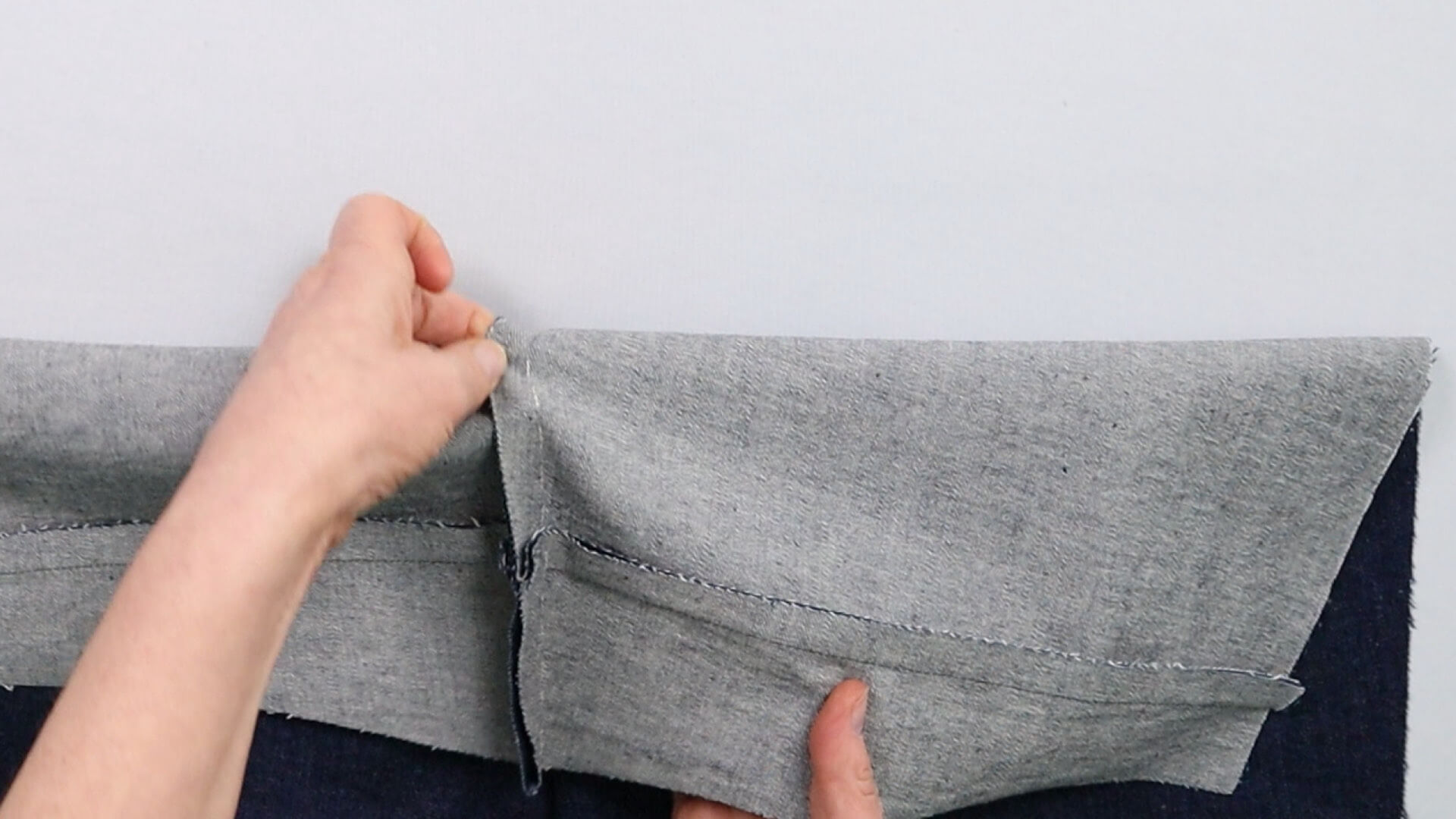
It is a good idea to check the position of the back pockets when trying them on. The positioning can have a major influence on the appearance, which in turn is a matter of personal preference.
I put the back pieces in front of me with the right side facing me. I place the seat seam to the left side, as I want to double topstitch the seam in this direction later.
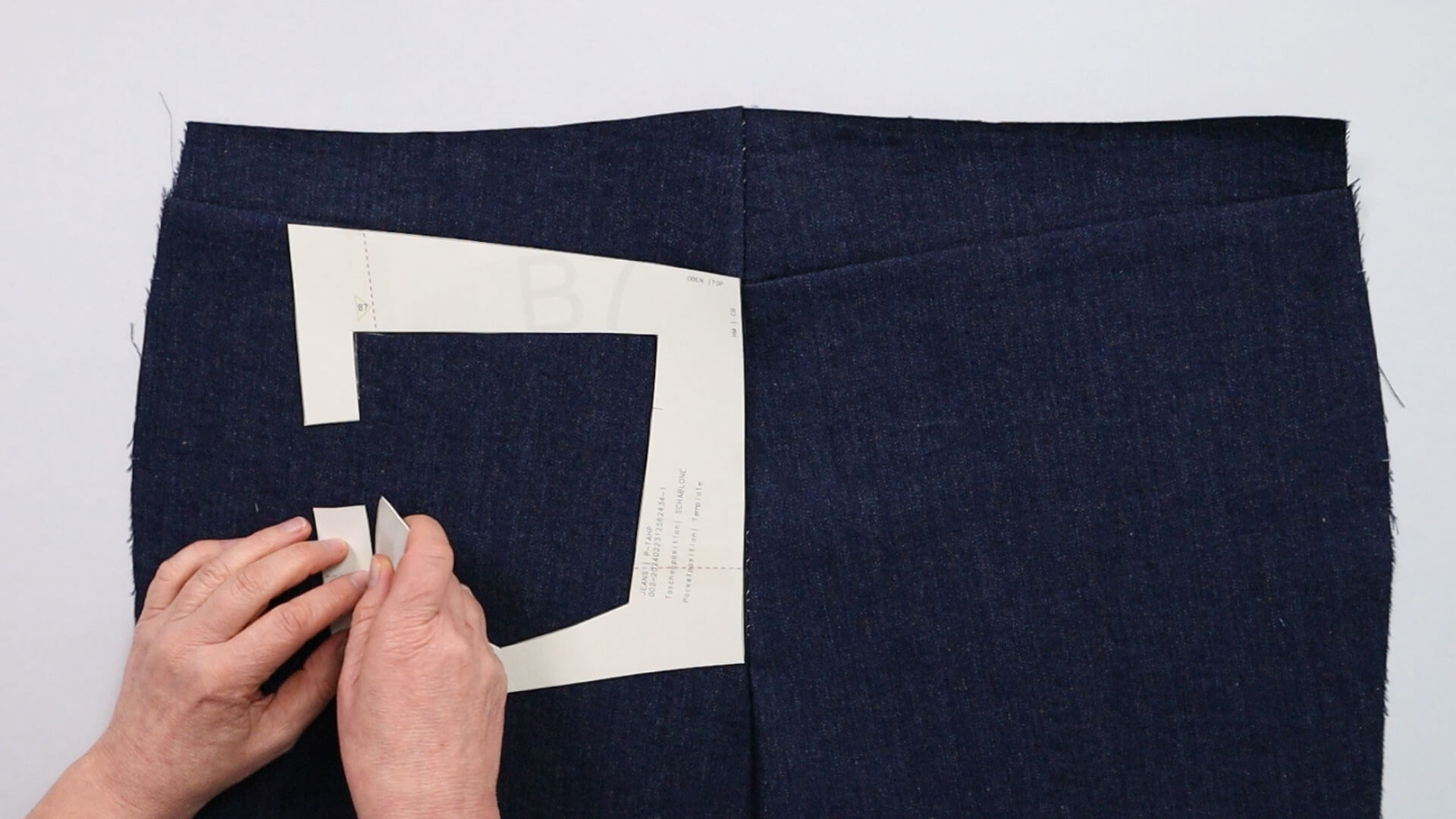
Now I place the template for the pocket position so that it lies on the left trouser part at the seat and yoke seam. If you have trousers without a yoke, place the template on the waistband edge instead. Then I mark the shape of the pocket with a few strokes of chalk on the edge of the opening and the sides.
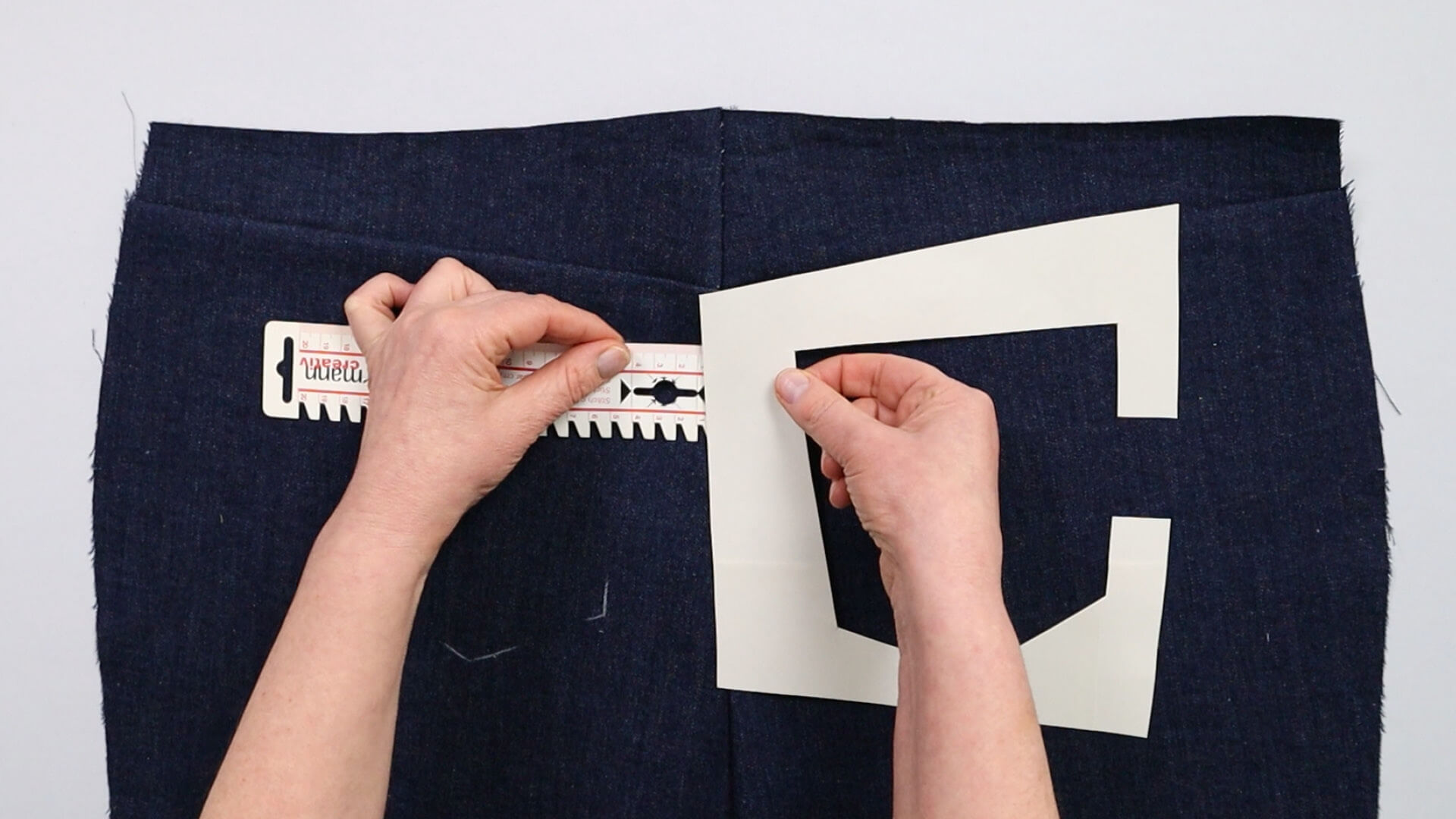
I proceed in the same way on the right trouser leg, but place the template mirrored and at a distance of 10 mm from the back seat seam. This is where I will later do the double stitching with seam distances of 2 and 8 mm, from which the pockets should have the same visual distance.
Option: Baste or pin pockets in place
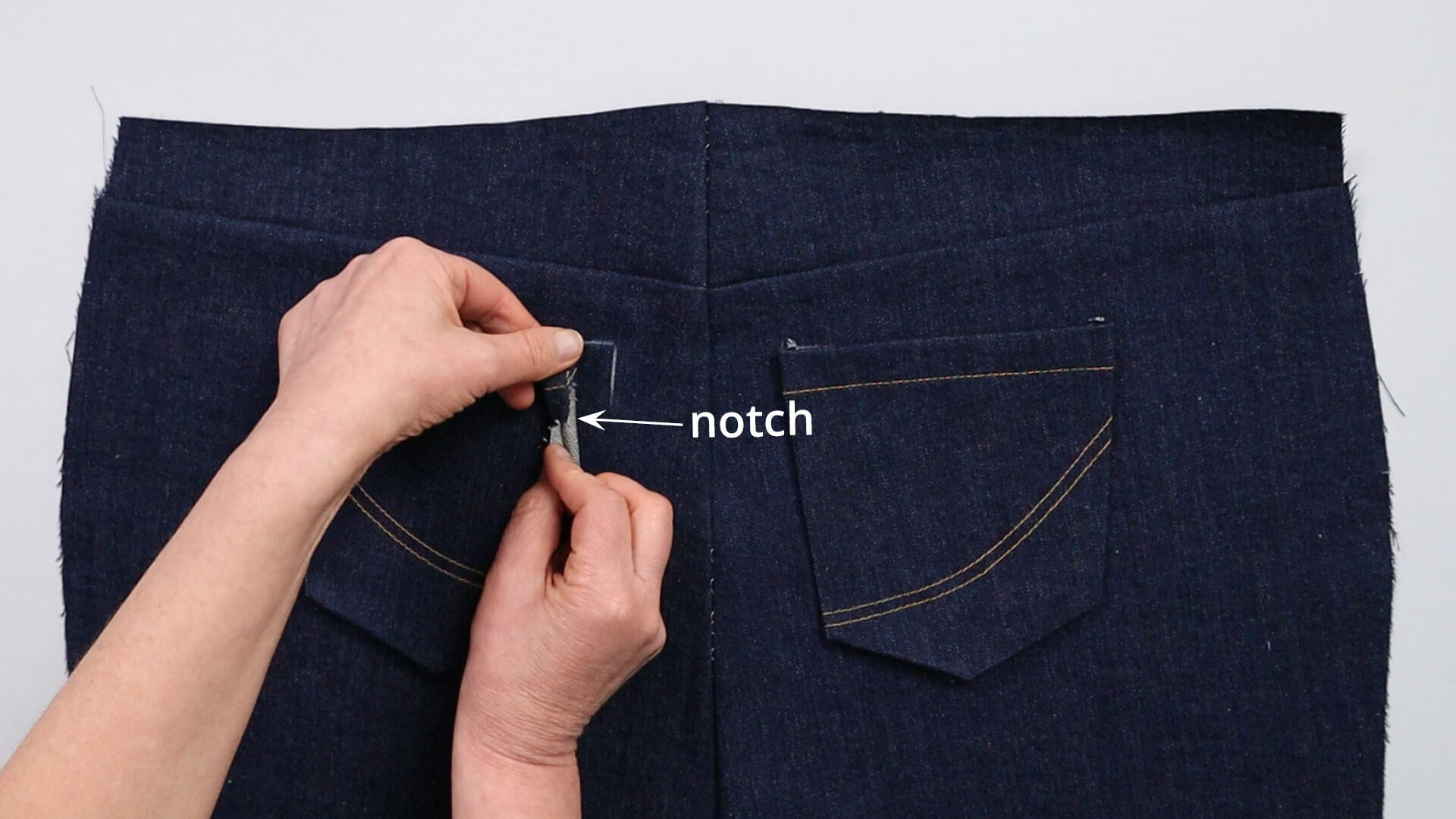
To be able to place the pockets to the correct leg piece, there is a notch on one side of the pocket piece that points towards the center back seam.
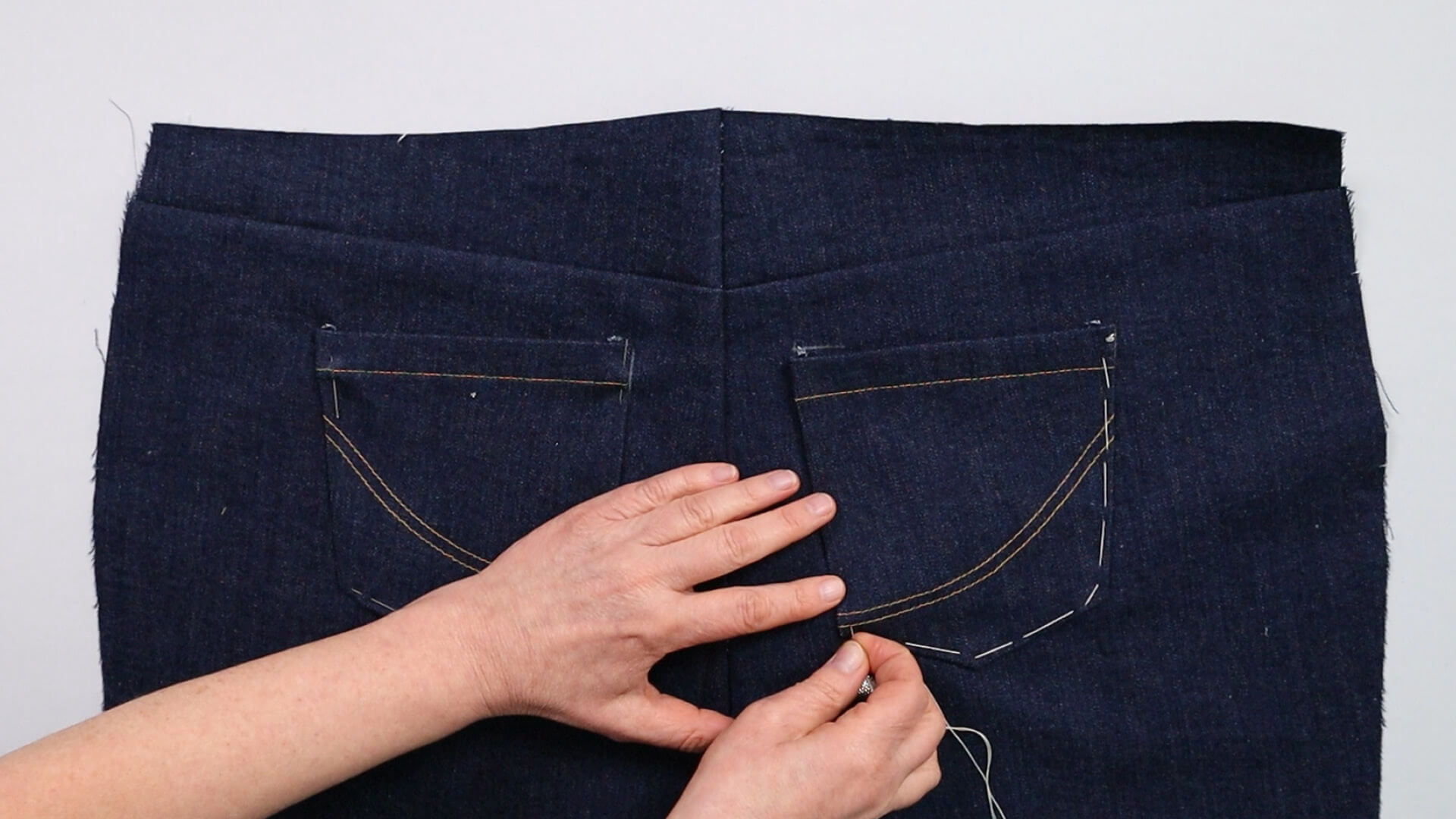
If you like, you can pin or baste the finished pocket template or the pre-made pockets (if you have already made them) to the markings. If you don’t like the position, you can of course also move the pockets.
4. Close the leg seams
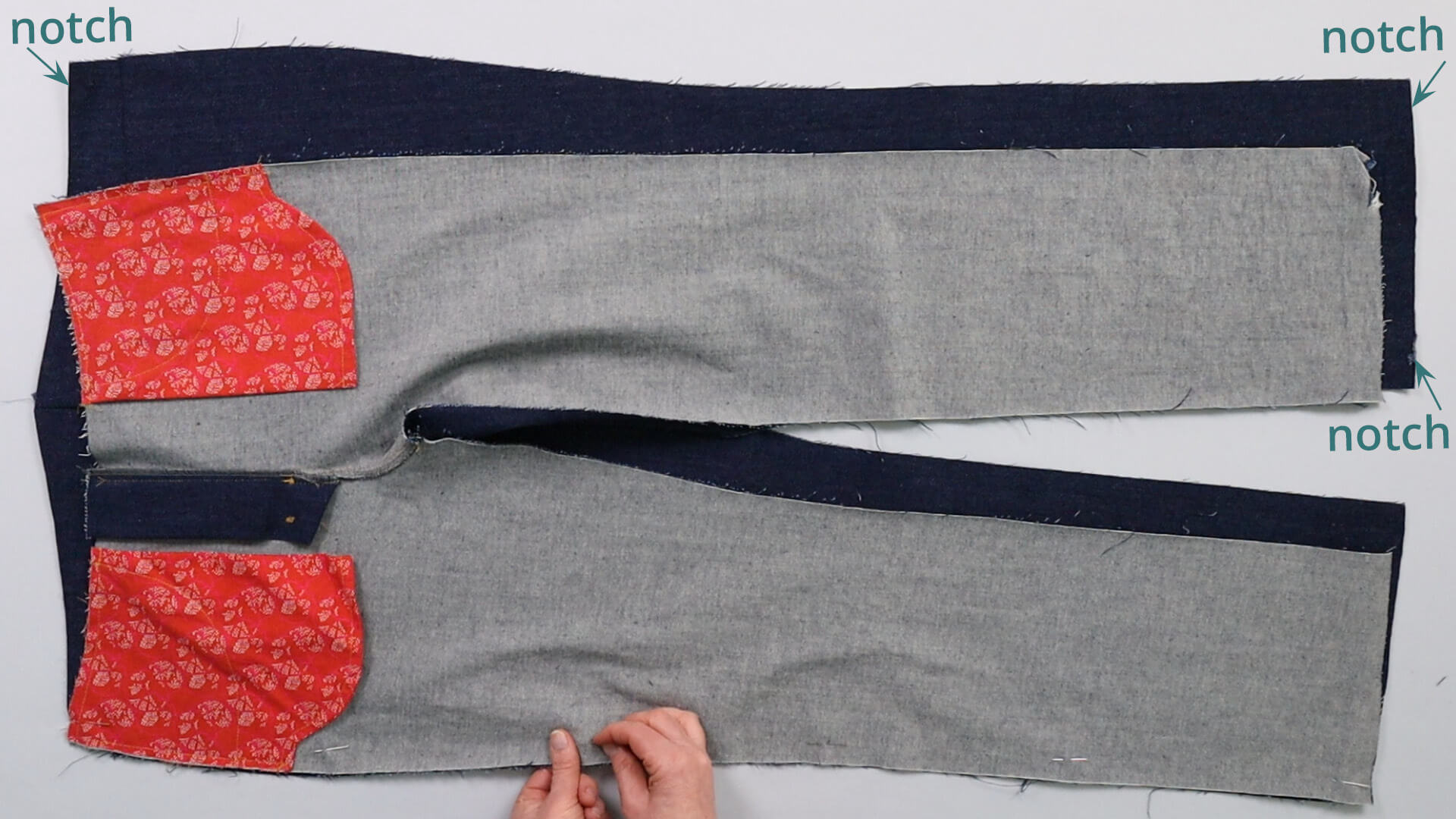
Now close the leg seams. To do this, I lay the front piece right sides together on the back and pin them together at the side seams. I make sure that the notches meet.
Also note how wide the seam allowances should be. You can measure this in the pattern or recognize it by the distance between the notches at the beginning or end of the seam and the edge of the fabric. If there are no notches, the standard seam allowance of 10 mm applies.
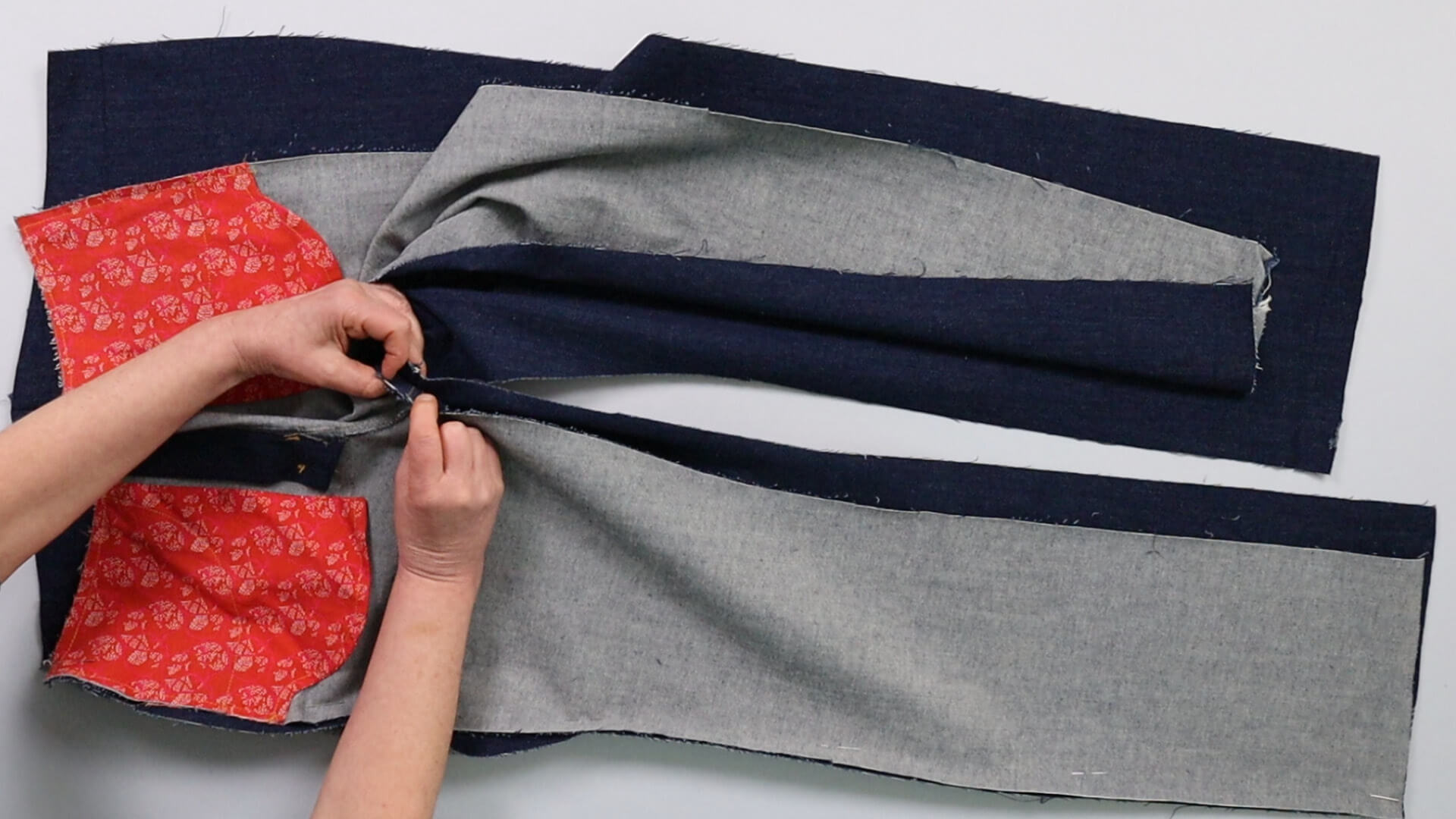
I then pin the inner leg seam together. Here I make sure that the back seam and the short inseam of the front meet exactly.
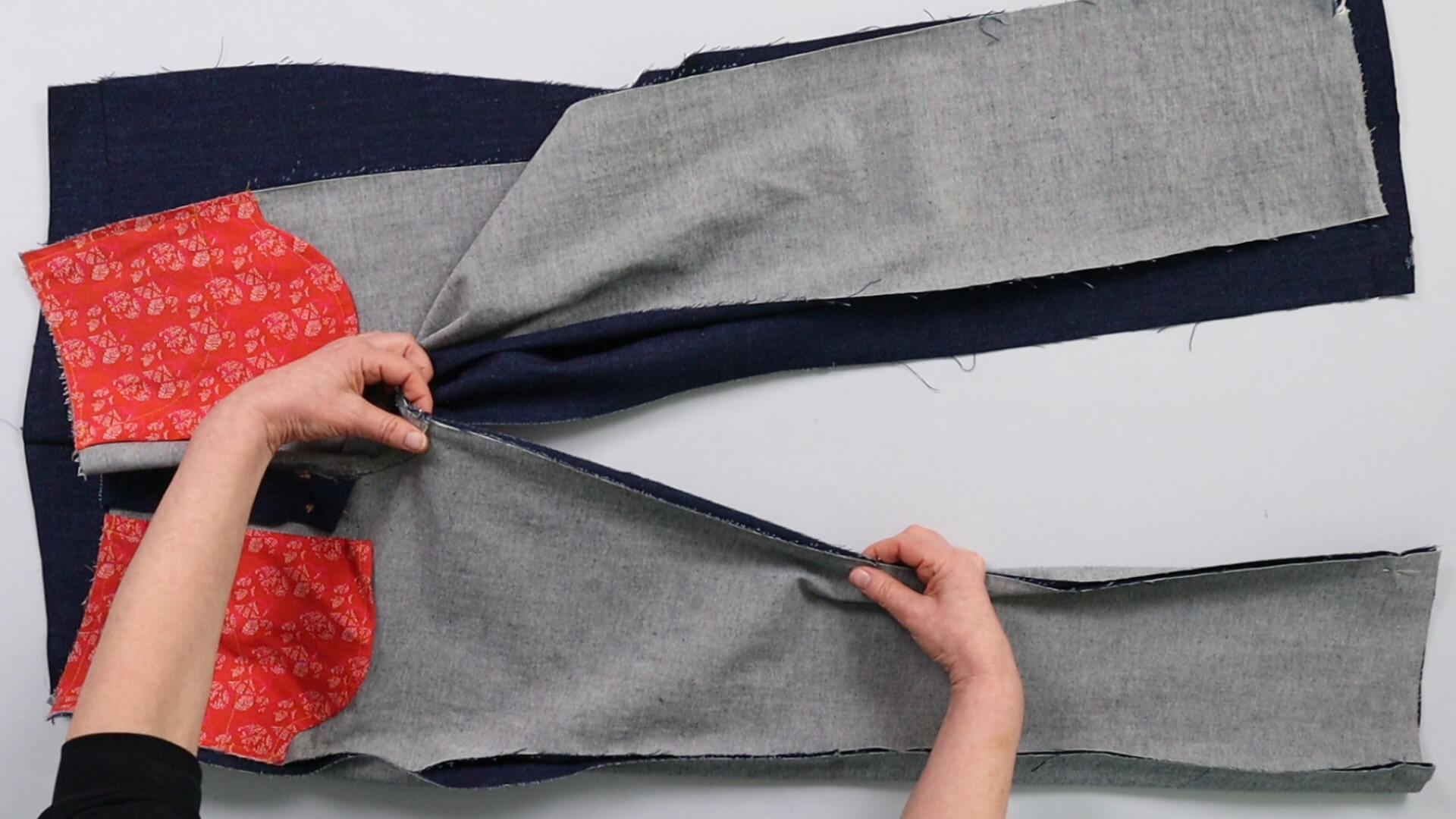
From this crotch point to the knee, the back leg must be stretched slightly to the length of the front. This difference is included into the pattern for a better fit.
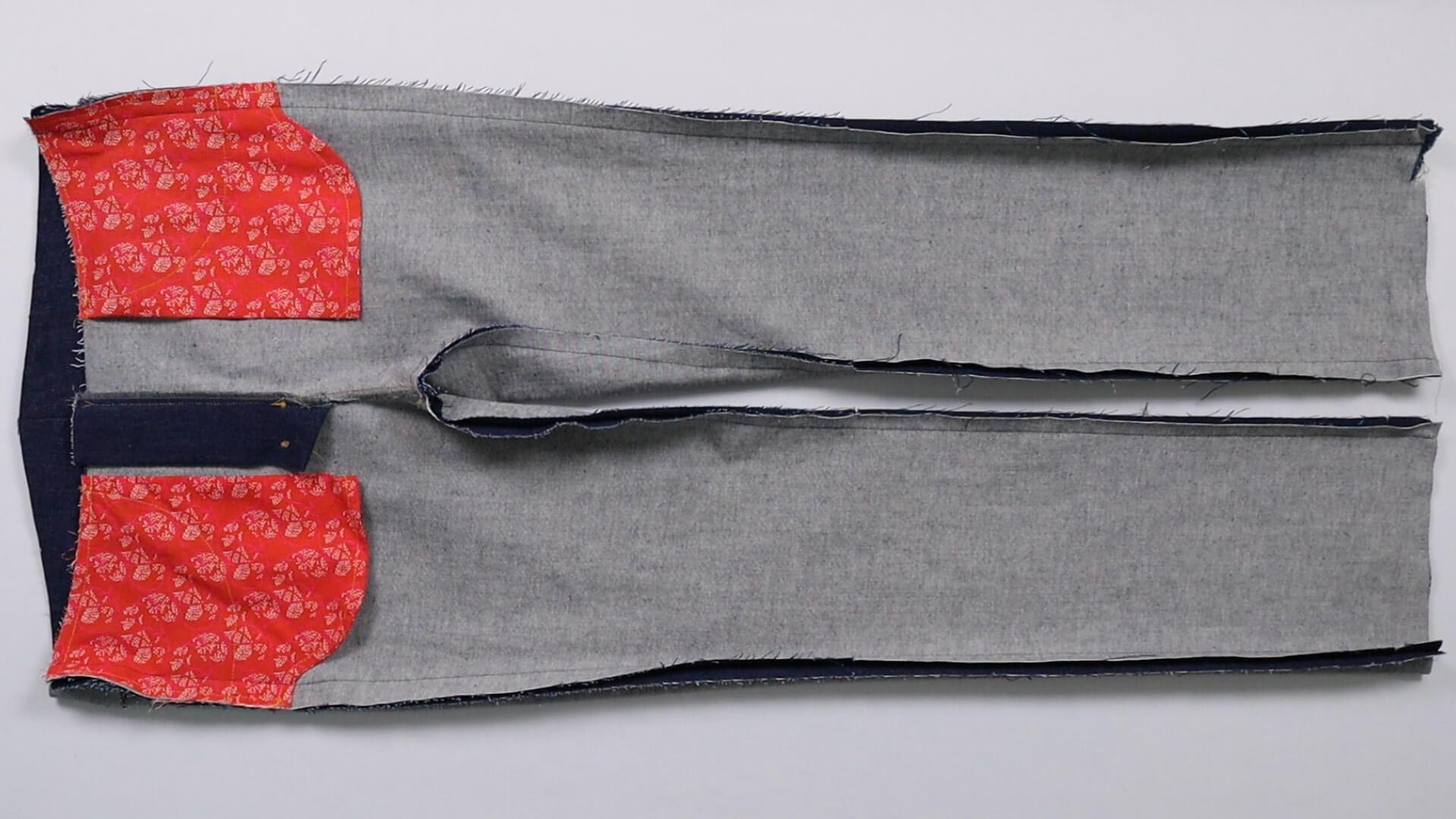
The outer and inner leg seams are now also joined with a long machine stitch or a basting seam.
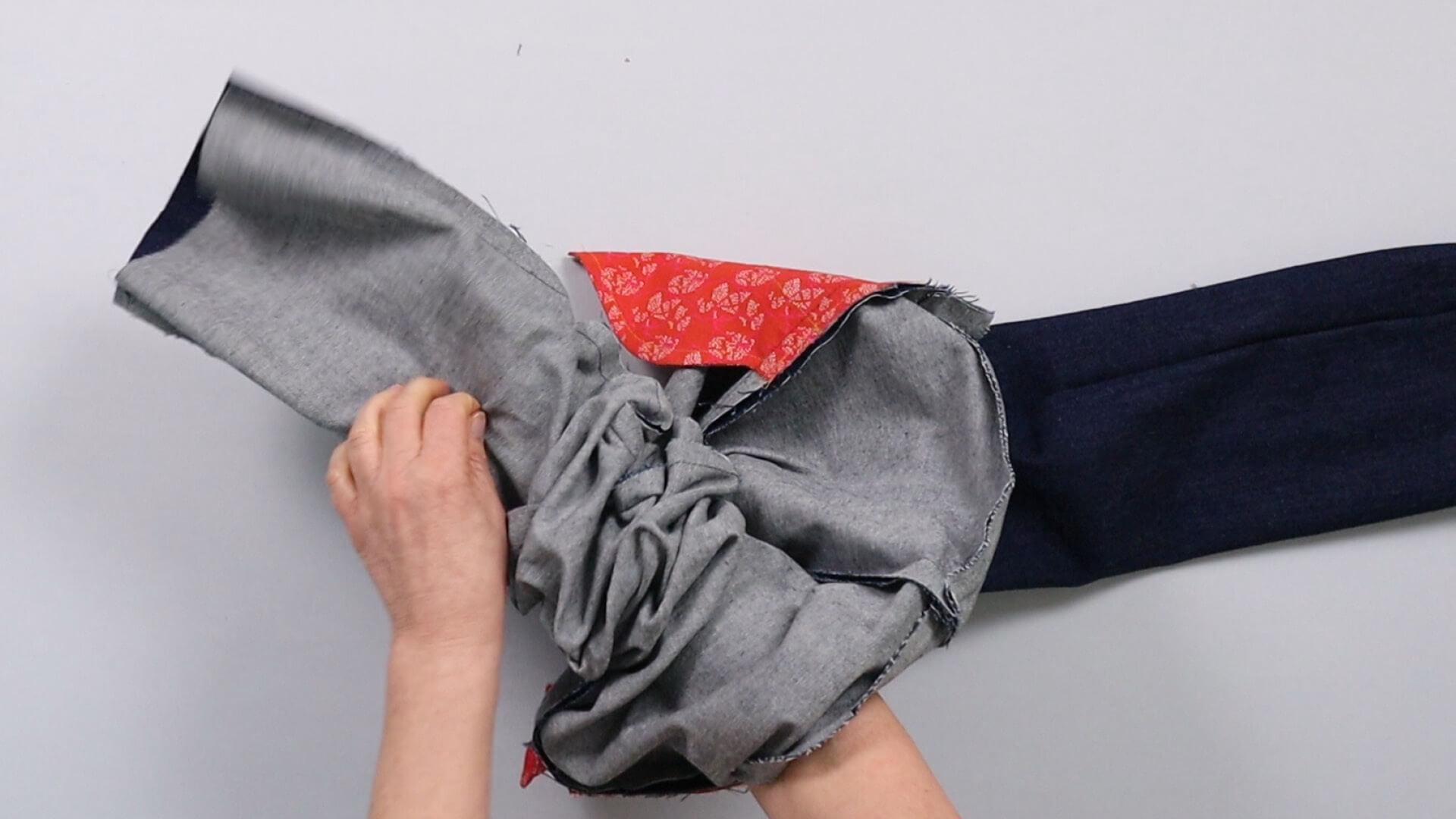
The trousers can then be turned inside out. Be careful not to hurt yourself with the pins if you have pinned the pockets.
5. Prepare the waistband
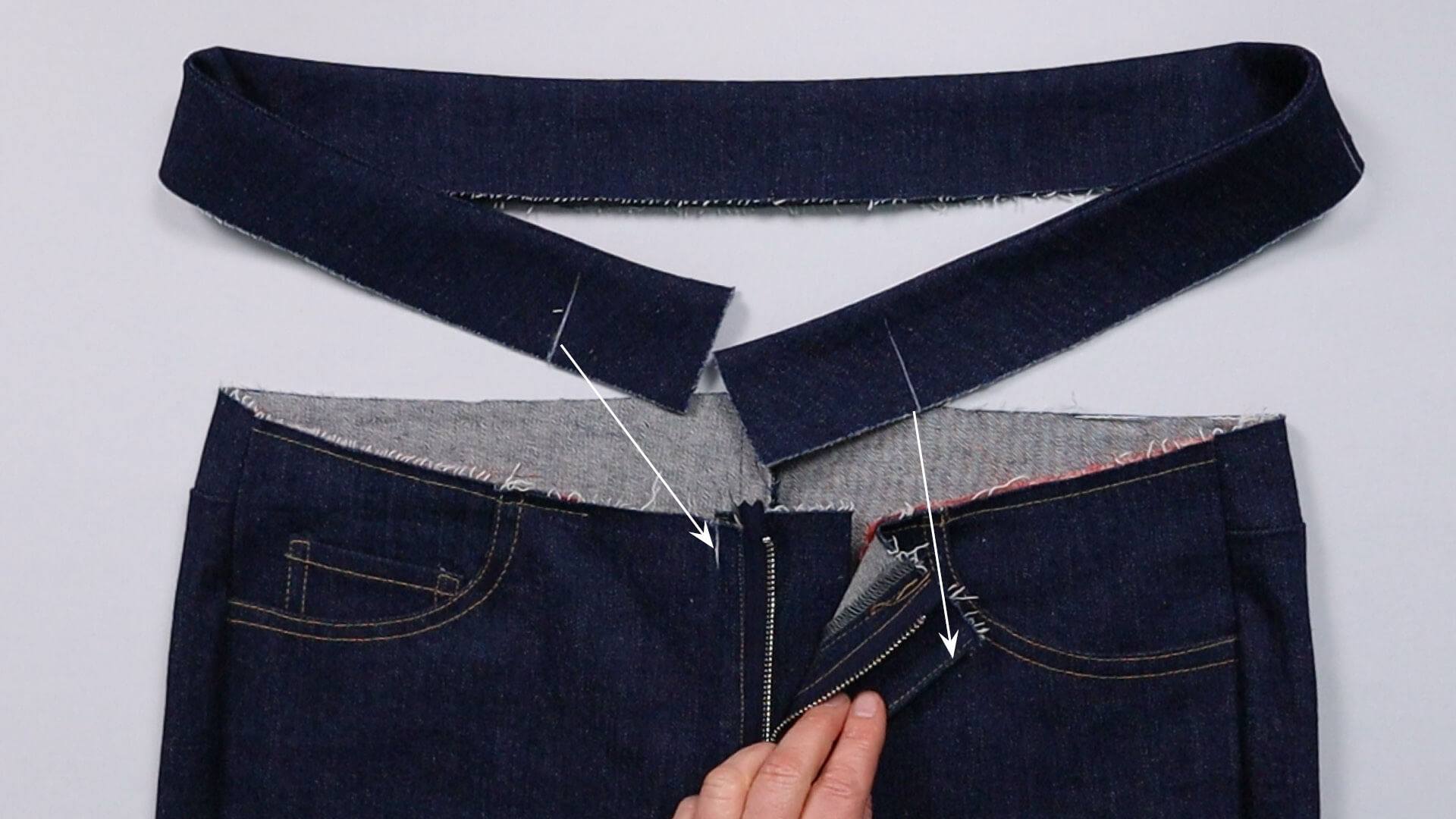
It is important to also attach the waistband for the fitting. Especially with a shaped waistband, the trousers would appear much too wide without it.
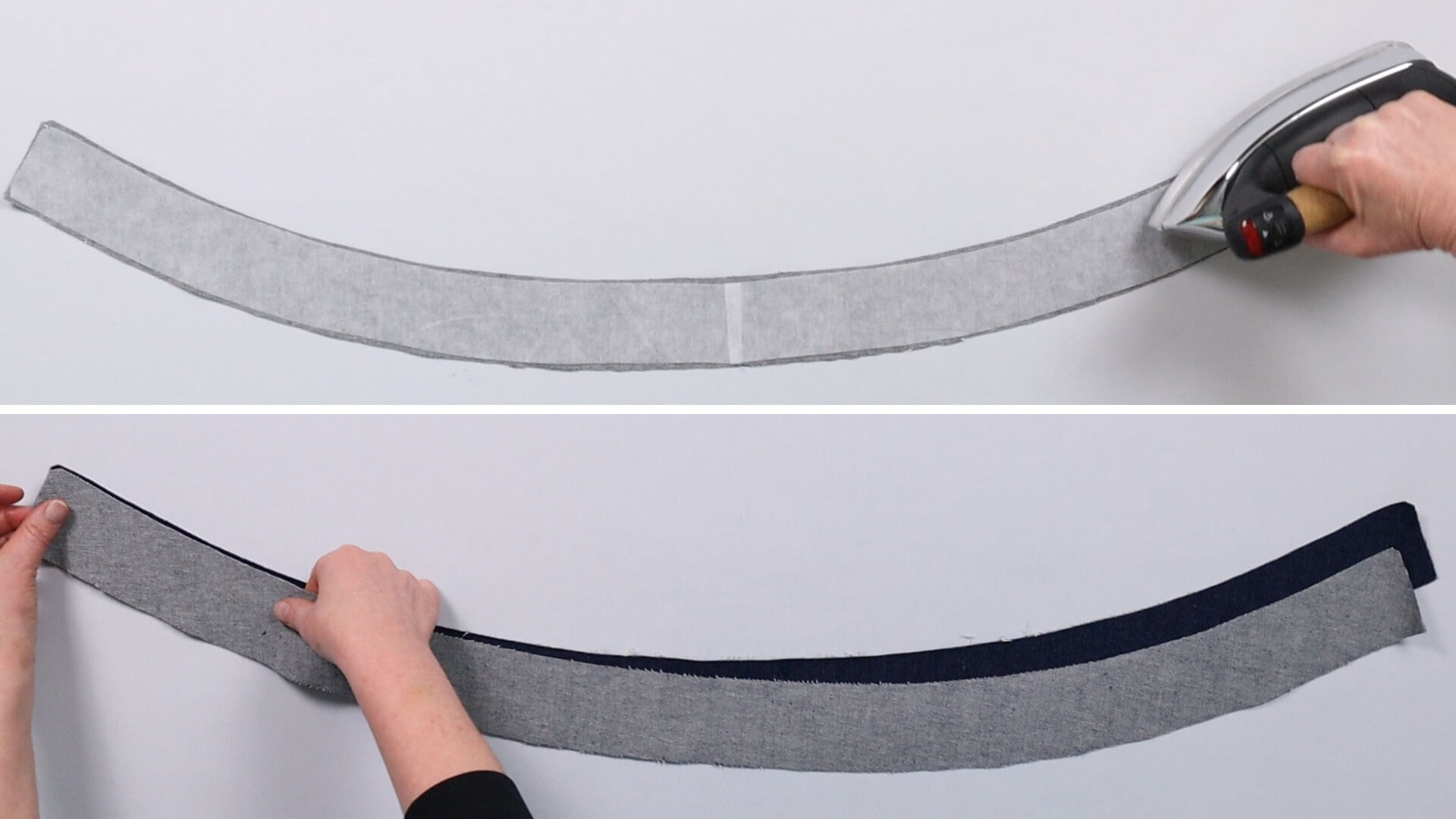
Before the waistband can be attached, I have to prepare it. At this point, I am anticipating the work step for sewing the waistband.
I lay one of the waistbands in front of me with the wrong side of the fabric facing up and iron on the interfacing. This will later become the outer waistband.
The interfacing is cut from two parts, as it is often only available in a narrow allowance. The parts then overlap slightly at the center back.
Follow the manufacturer’s instructions for the temperature and duration with which the interfacing should be ironed on.
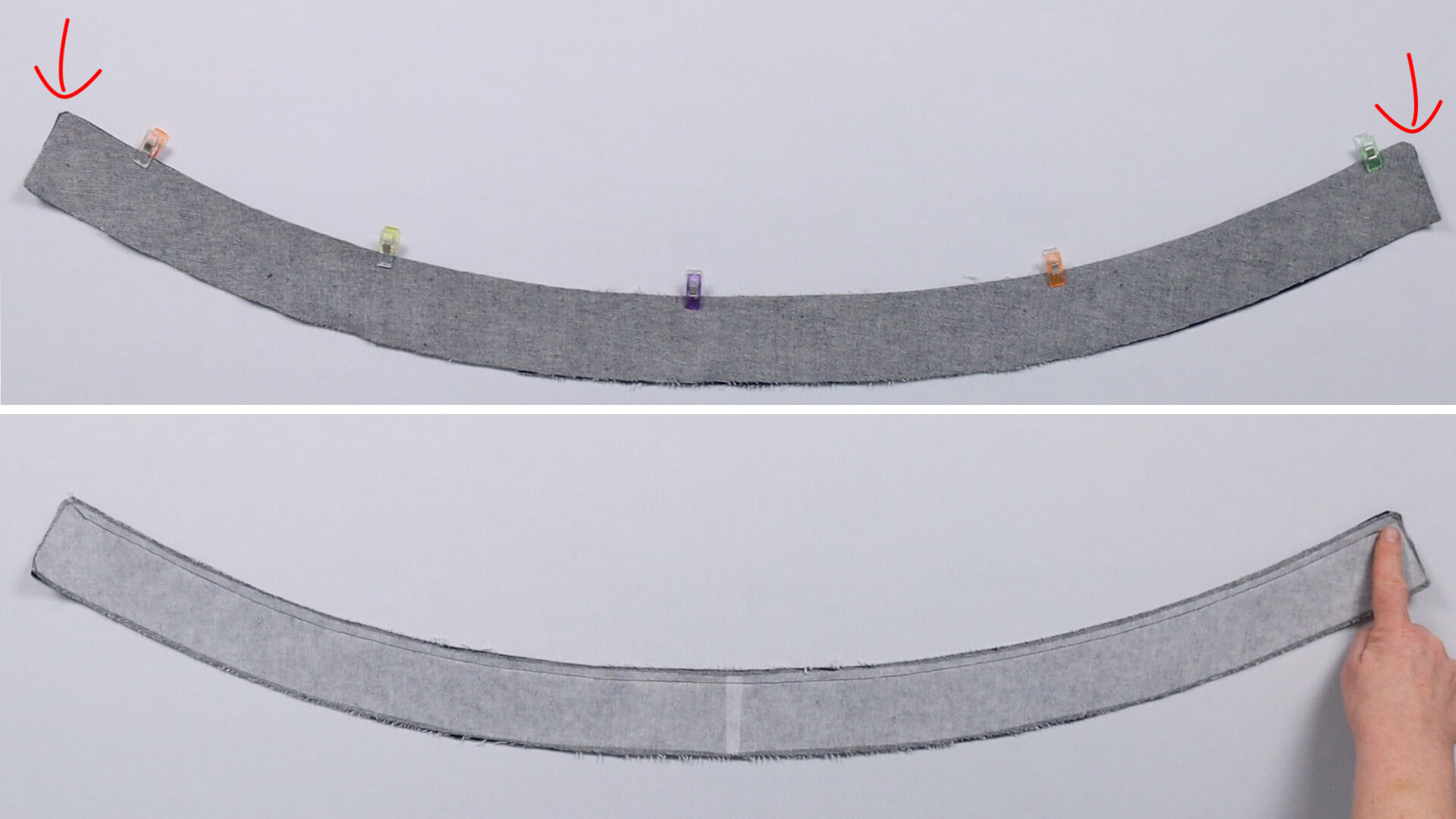
Then I turn the waistband over so that the right side of the fabric is facing me, lay the second waistband strip over it, right sides facing, and pin them together at the top edge. I can recognize the top edge by the chamfered corners at the narrow ends.
As this seam at the top edge will not be unpicked, I sew it together at 1 cm seam allowance with a normal stitch length. I start and end approx. 1.5 cm before the short edges. I do not lock the beginning and end of the seam, as I may have to open up a short piece again later, depending on how the corners are worked.
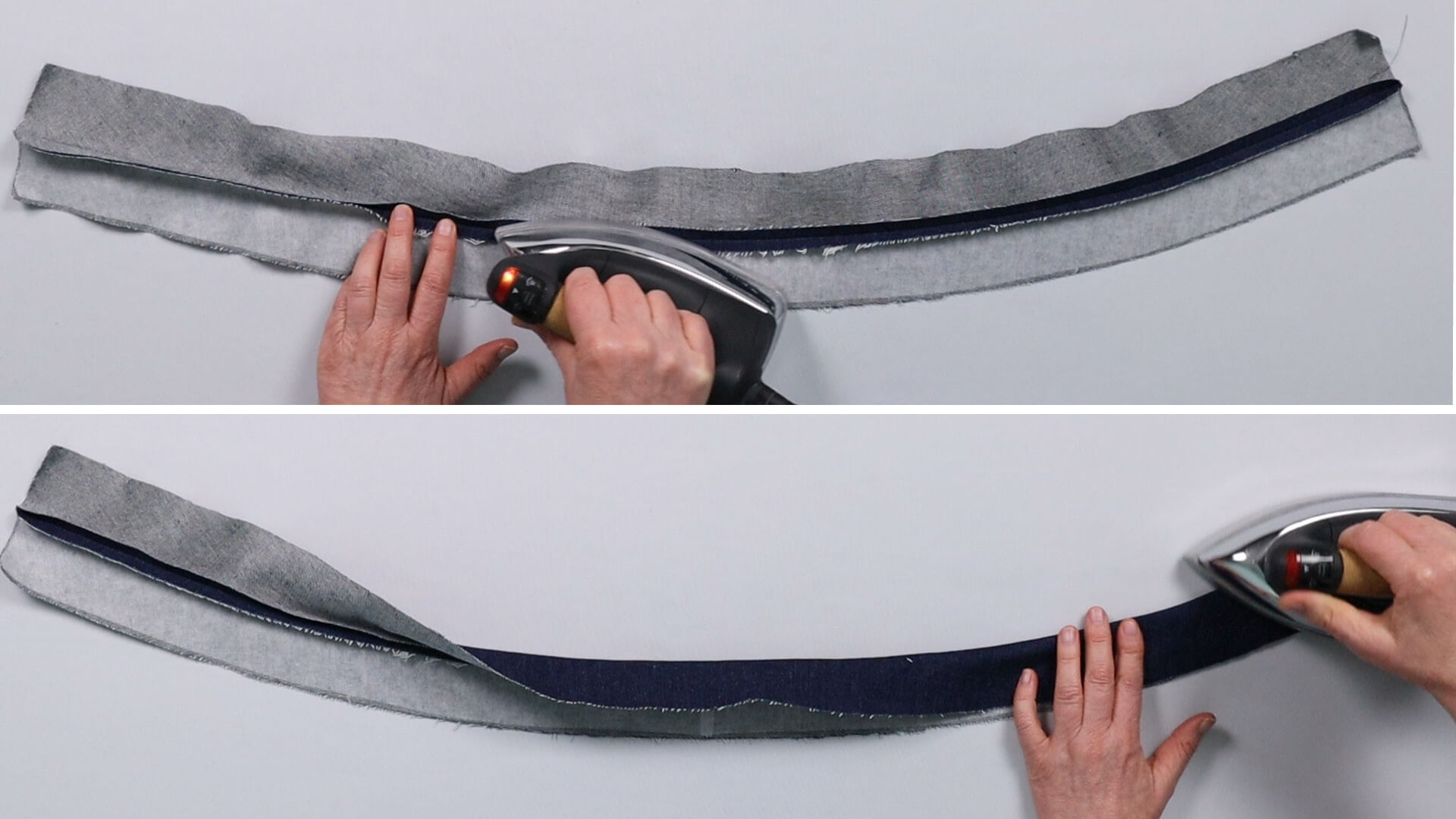
Next, I press the seam allowances open at the top edge of the waistband.
Then I fold the inner waistband inside out onto the fused outer waistband and press the seam flat. I make sure that it lies slightly inwards at the top and does not push to the outside.
Transfer notches
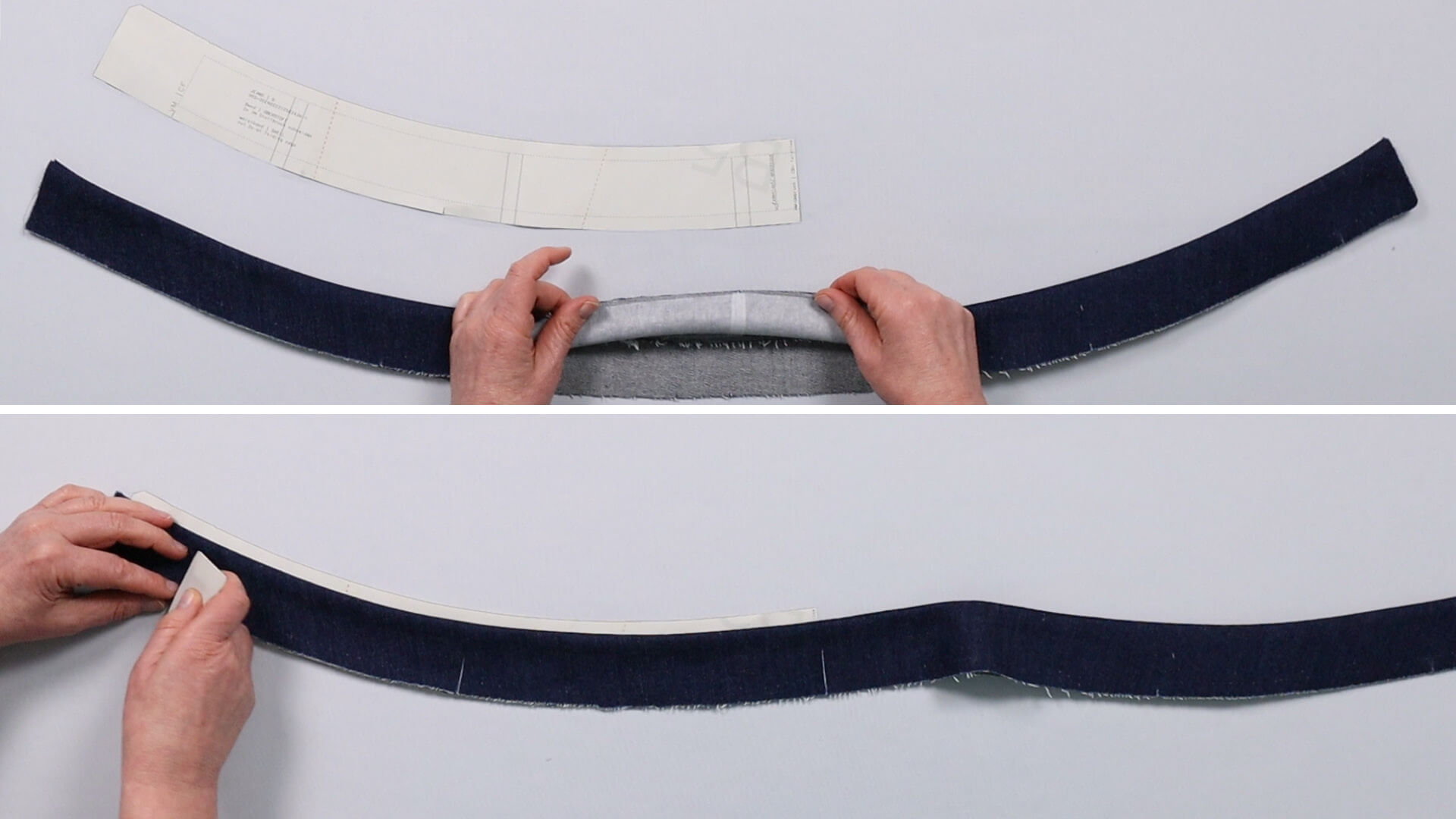
Now I transfer the notches for the center back, the side seam and the center front to the outside of the waistband – if I haven’t already done so when cutting.
If you have already transferred the notches during cutting, check the position again at this point. The waistband strip may stretch or shrink slightly when the interfacing is ironed on and during processing.
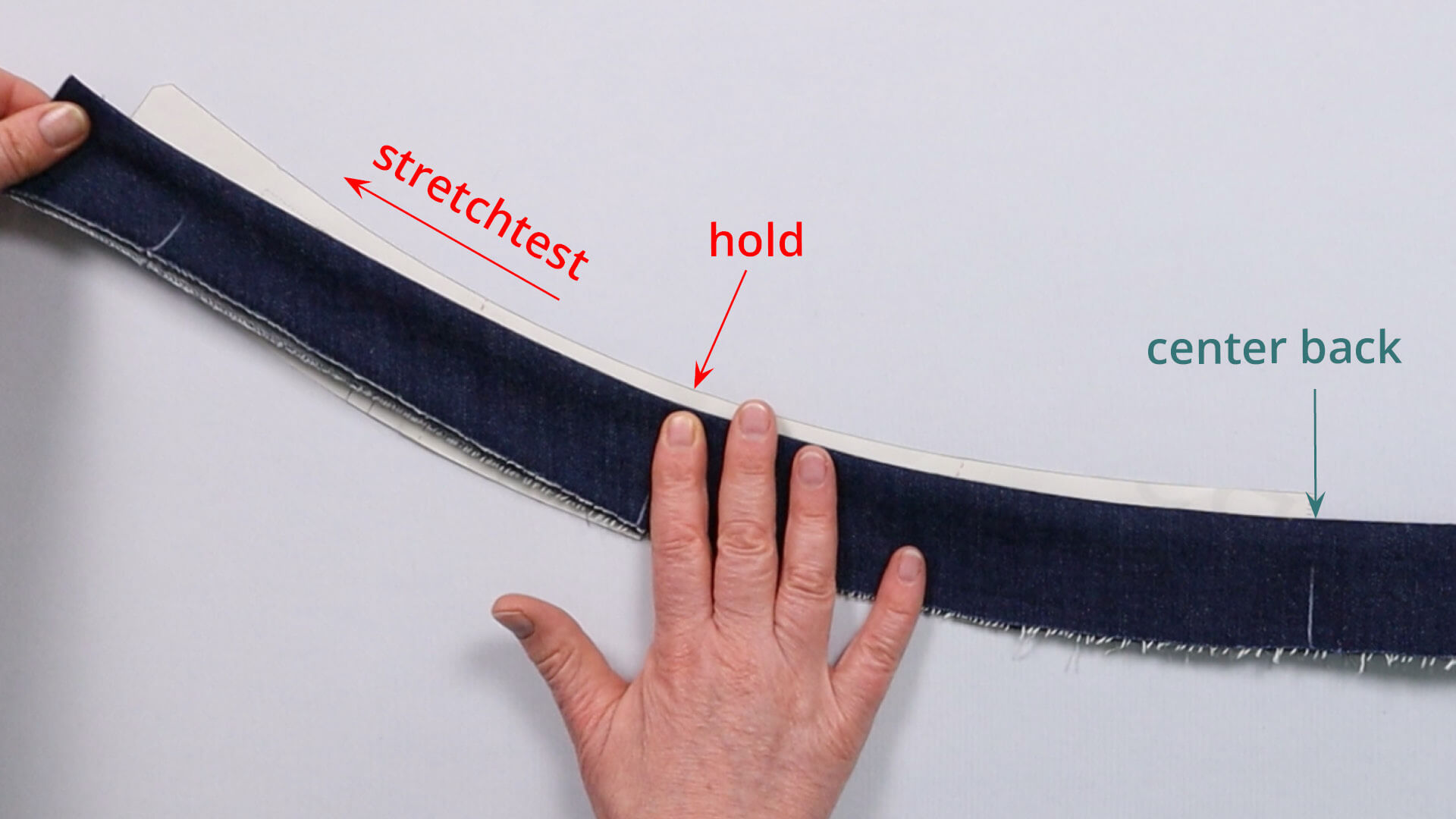
This is also a good opportunity to check whether the waistband length still matches the pattern. It could be that it has changed due to sewing or ironing. I also check whether the seam in the front area of the shaped waistband, where the fabric lies in the diagonal grain, is still stretchy.
6. Pin the waistband to the trousers for fitting

I first place the waistband over the trousers as shown in the photo.
The front notch on the lower edge of the waistband indicates the position of the center front on both sides. On the left trouser, the edge on the overlap side is the center front.
On the right side, the center front is where the overlap edge lies when the zipper or button placket is closed. If you are not sure exactly where it is, check your sewing pattern again.
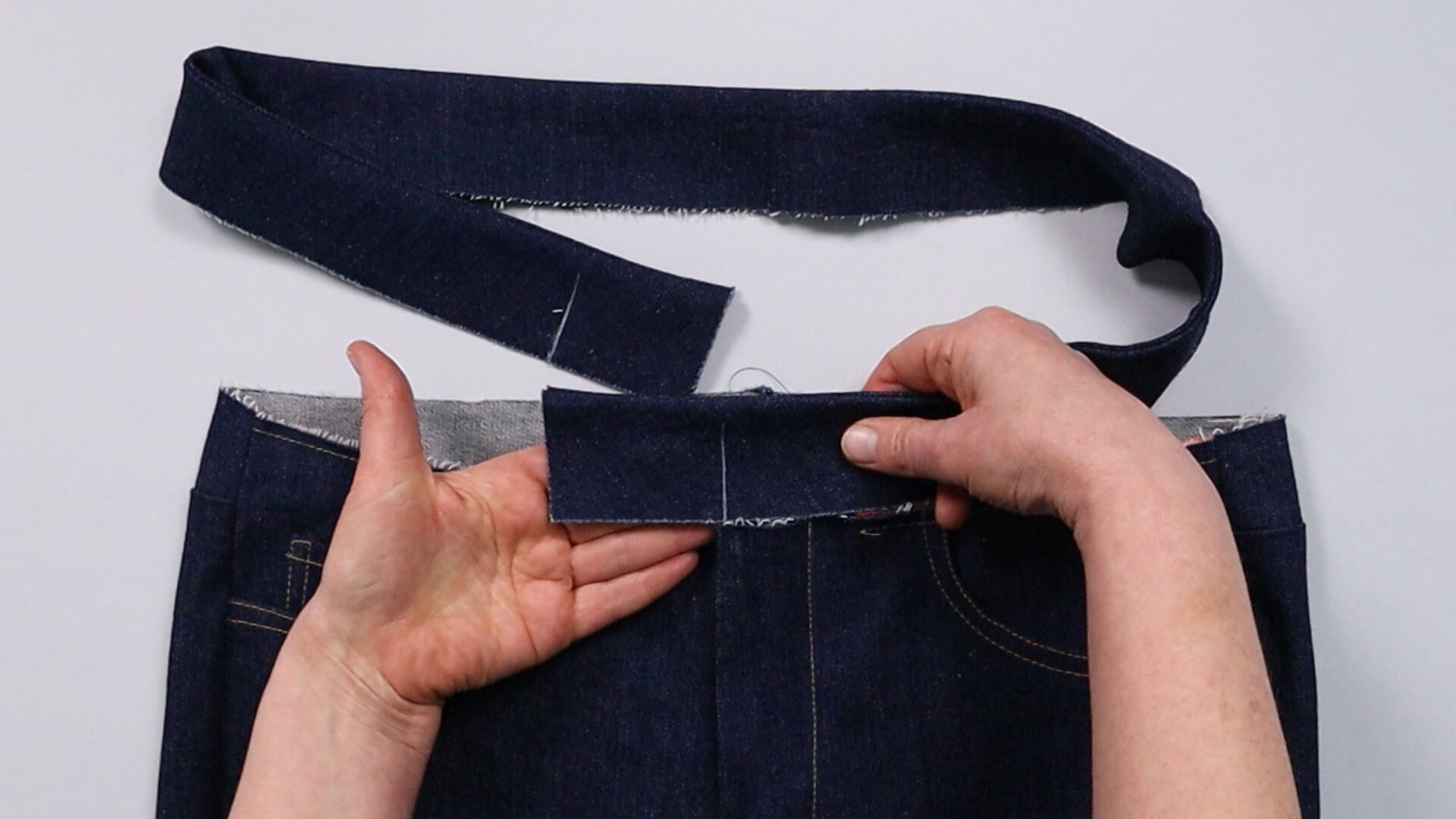
On the left side (with the fly stitching), the waistband protrudes a few centimeters. Don’t let this confuse you – I’ll go into this later.
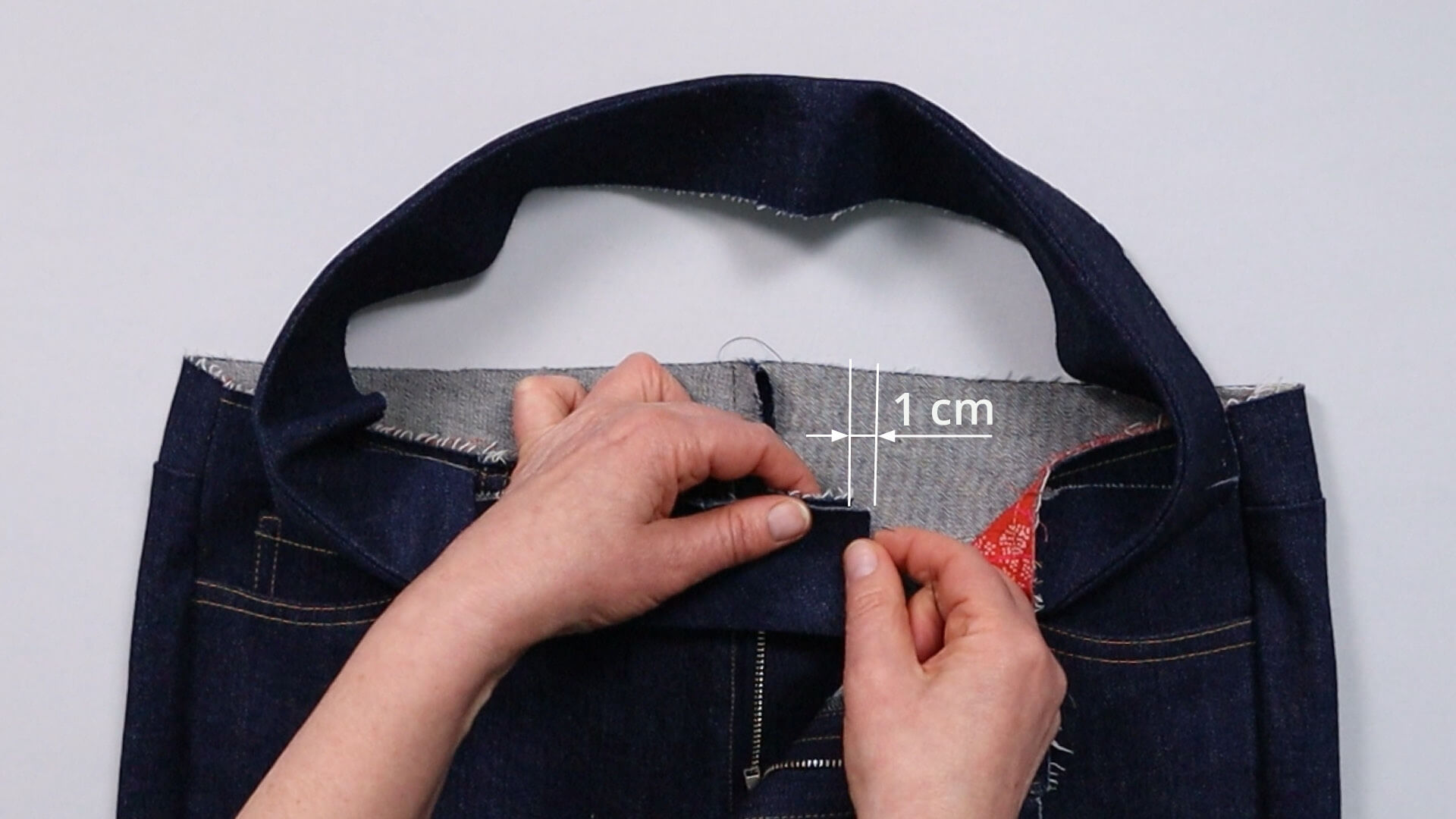
The waistband protrudes 1 cm on the right side, exactly the width of the seam.
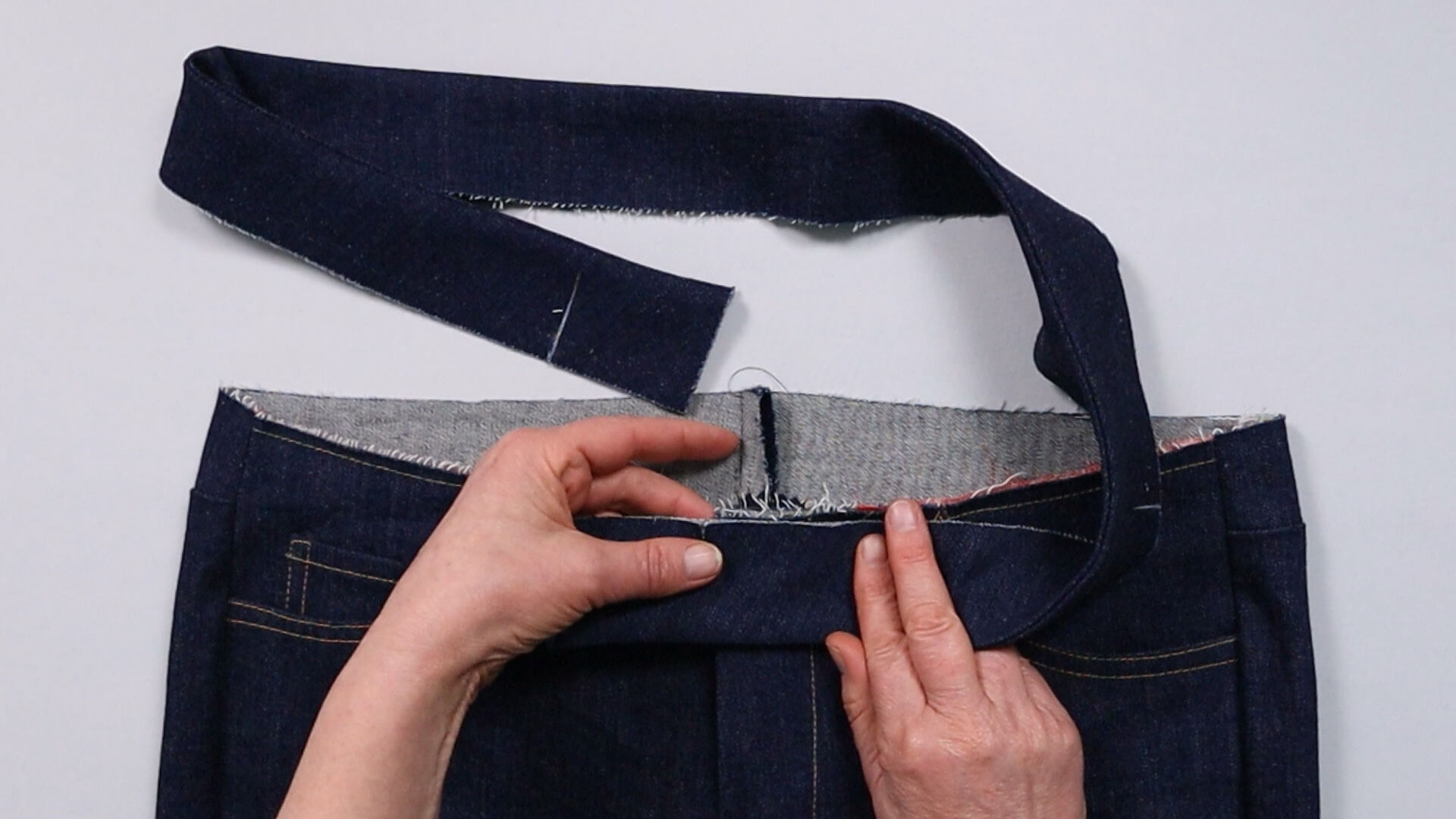
Now I pin the waistband all the way around and make sure that all the notches meet.
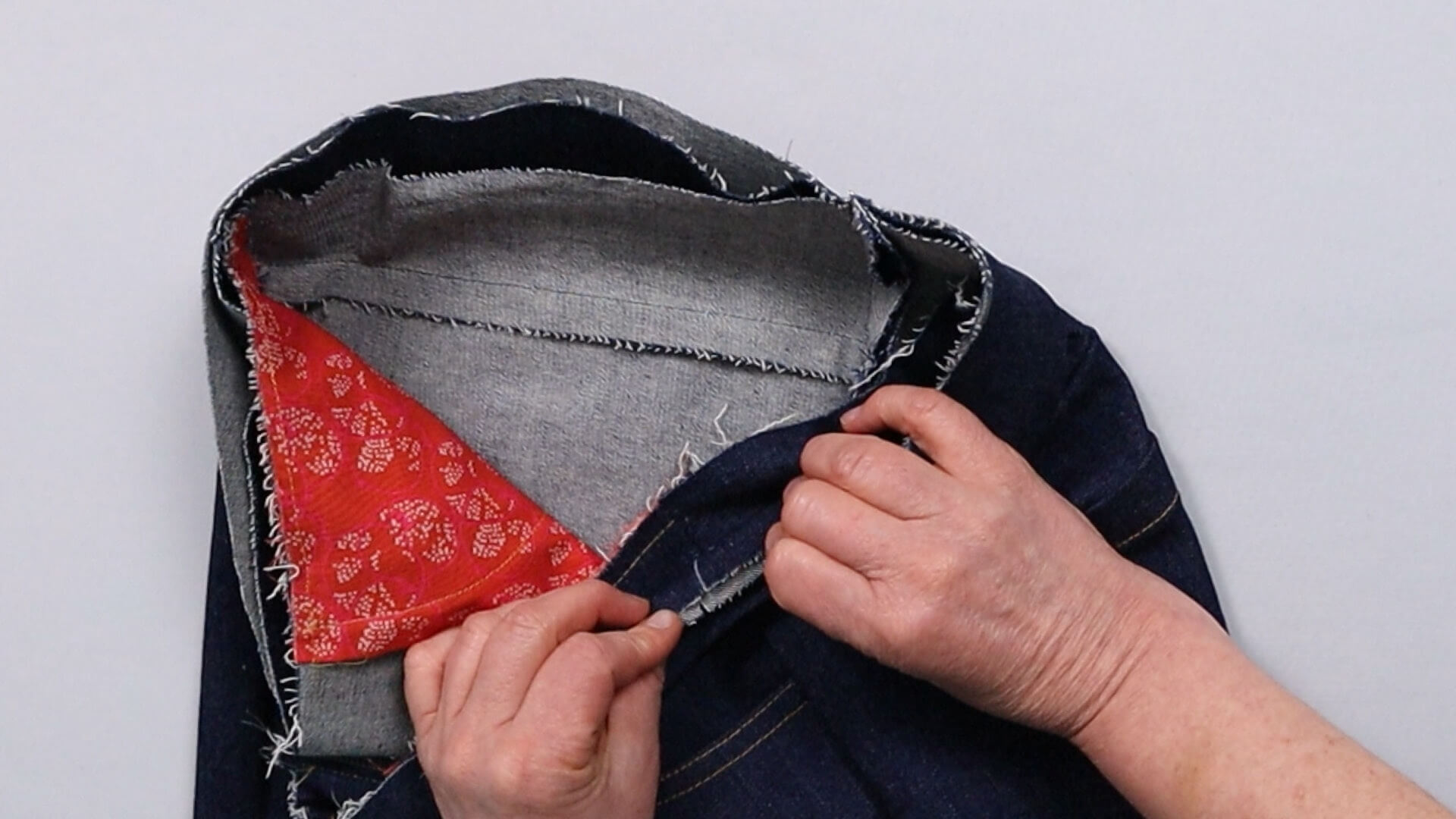
The side notches on the waistband match the side seams exactly.
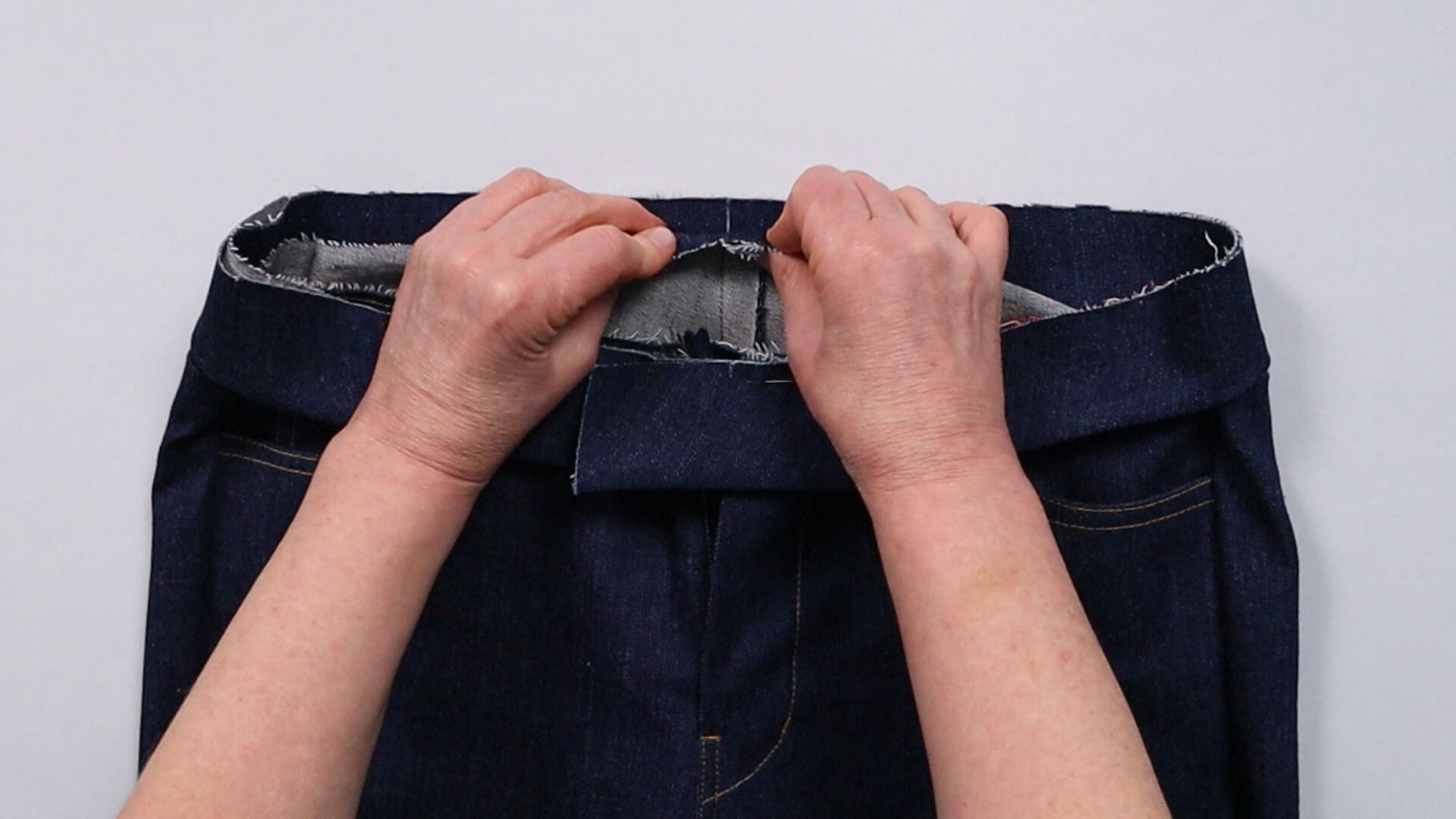
The notch at the center back hits the back seam exactly. I distribute the width between the notches evenly, whereby the waistband is rather tight in relation to the trousers.
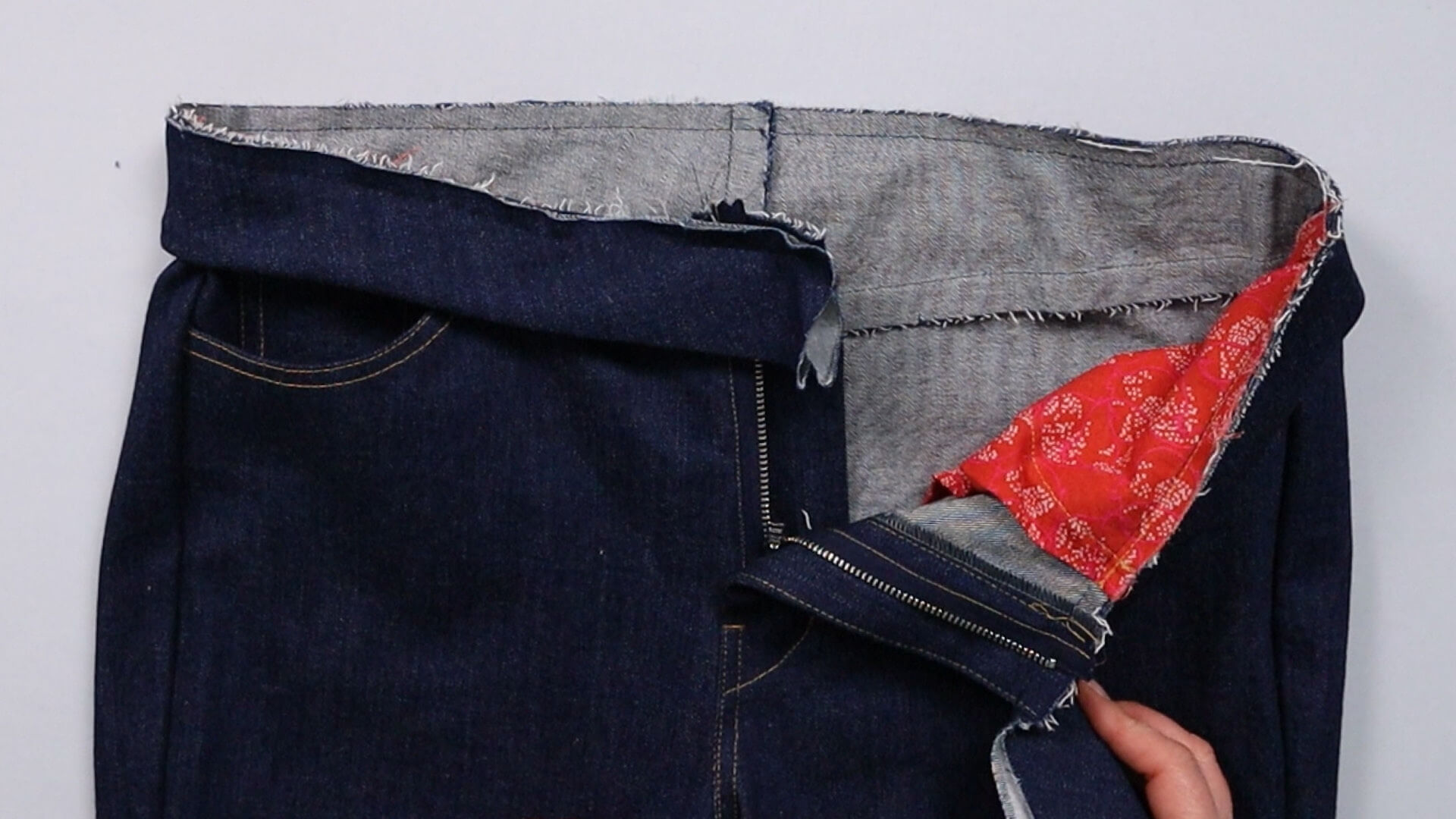
I now sew the waistband to the trousers in a double layer with a seam allowance of 1 cm. Again, I use a long machine stitch or a basting stitch.
7. Fitting
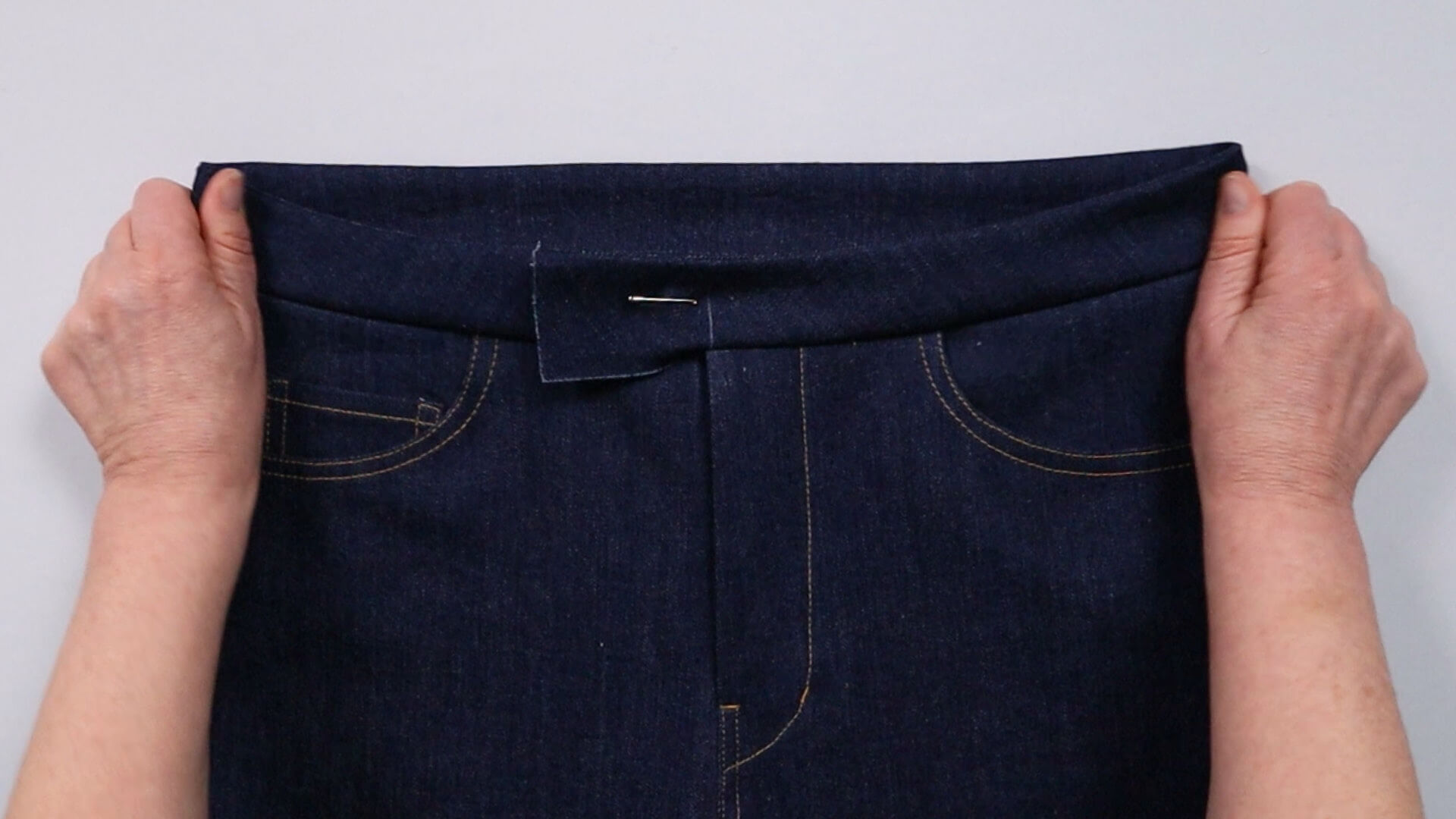
Now you can try on the trousers. To do this, carefully pin the waistband together with a safety pin so that the front center is on top of each other, even if there is tension on the waistband.
The hem turn-up is folded over to the outside so that it can be corrected more easily. Don’t make the trousers too short and remember that they will often change a little as you wear them.
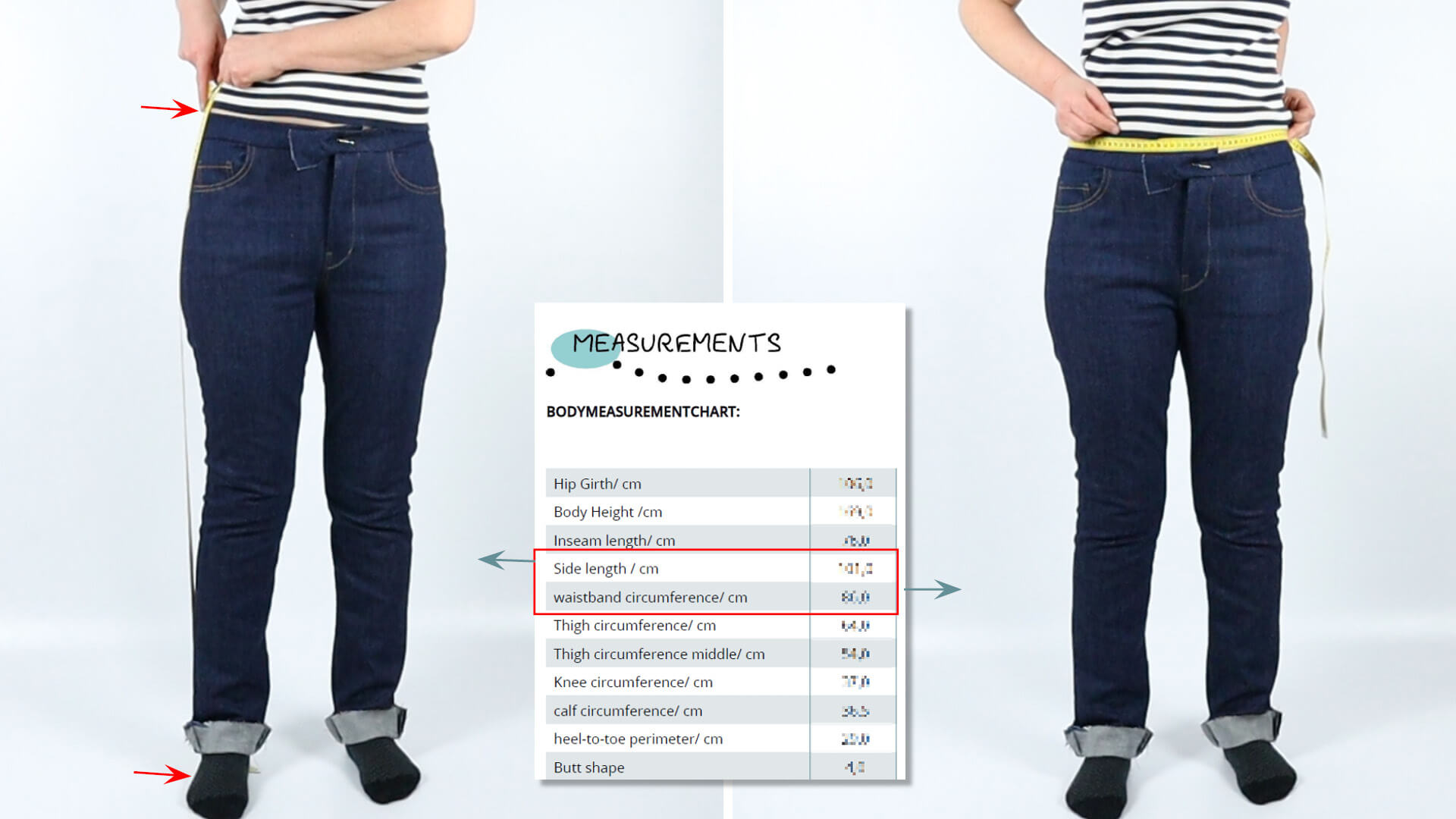
Make sure that the waistband is at the right height. To check this, measure the side length from the floor to the top edge of the waistband and compare it with the side length you entered in the configurator.
If the waistband sits at the right height, but is still too tight or too wide, compare the measurement you entered when configuring the pattern with the circumference measurement at the point where your waistband now sits.
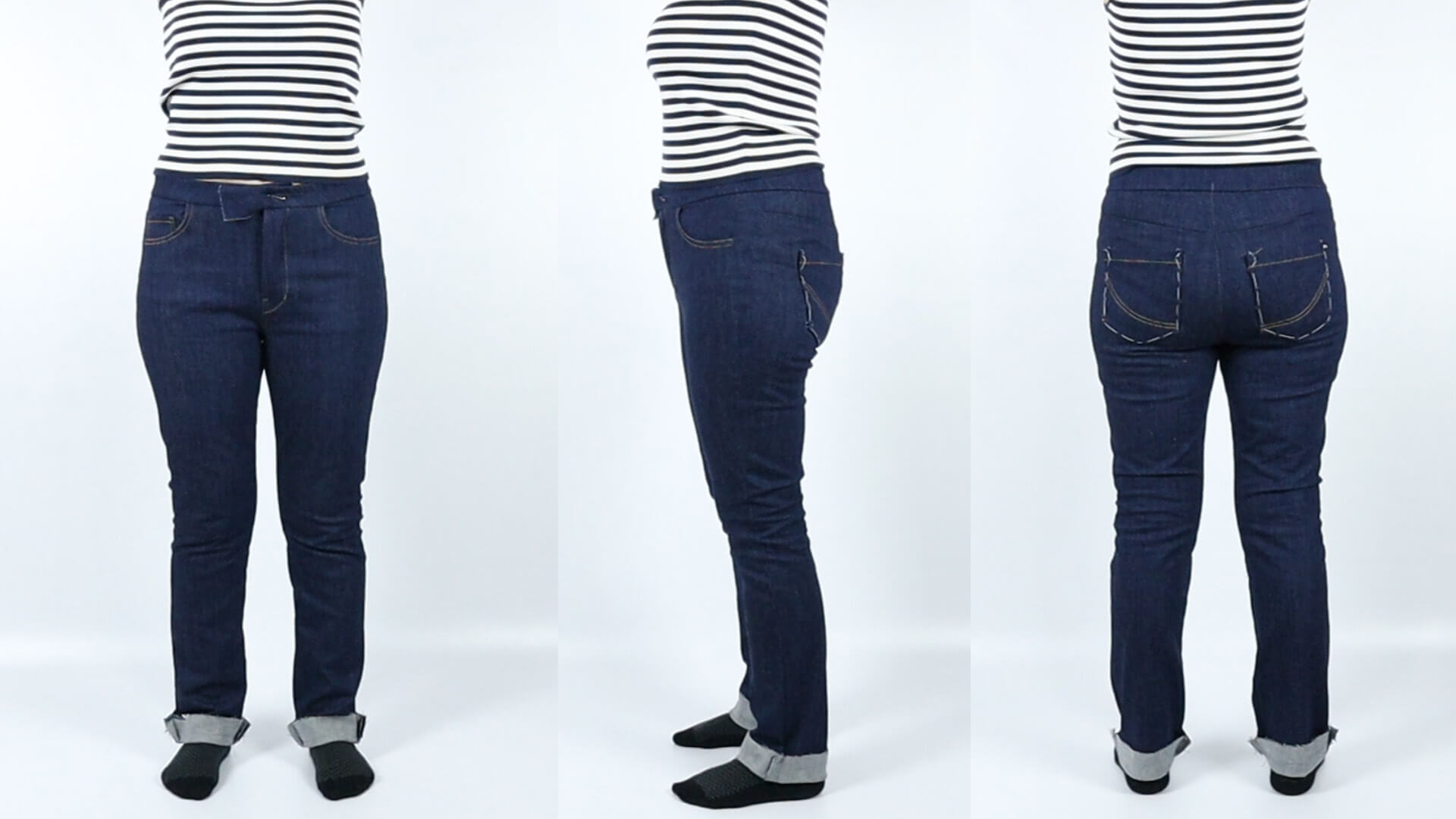
To get an impression of how the trousers fit, I recommend taking photos from the front, back and side. You should take the photos as straight as possible – i.e. not at an angle from above or below.
8. Options for adjustment
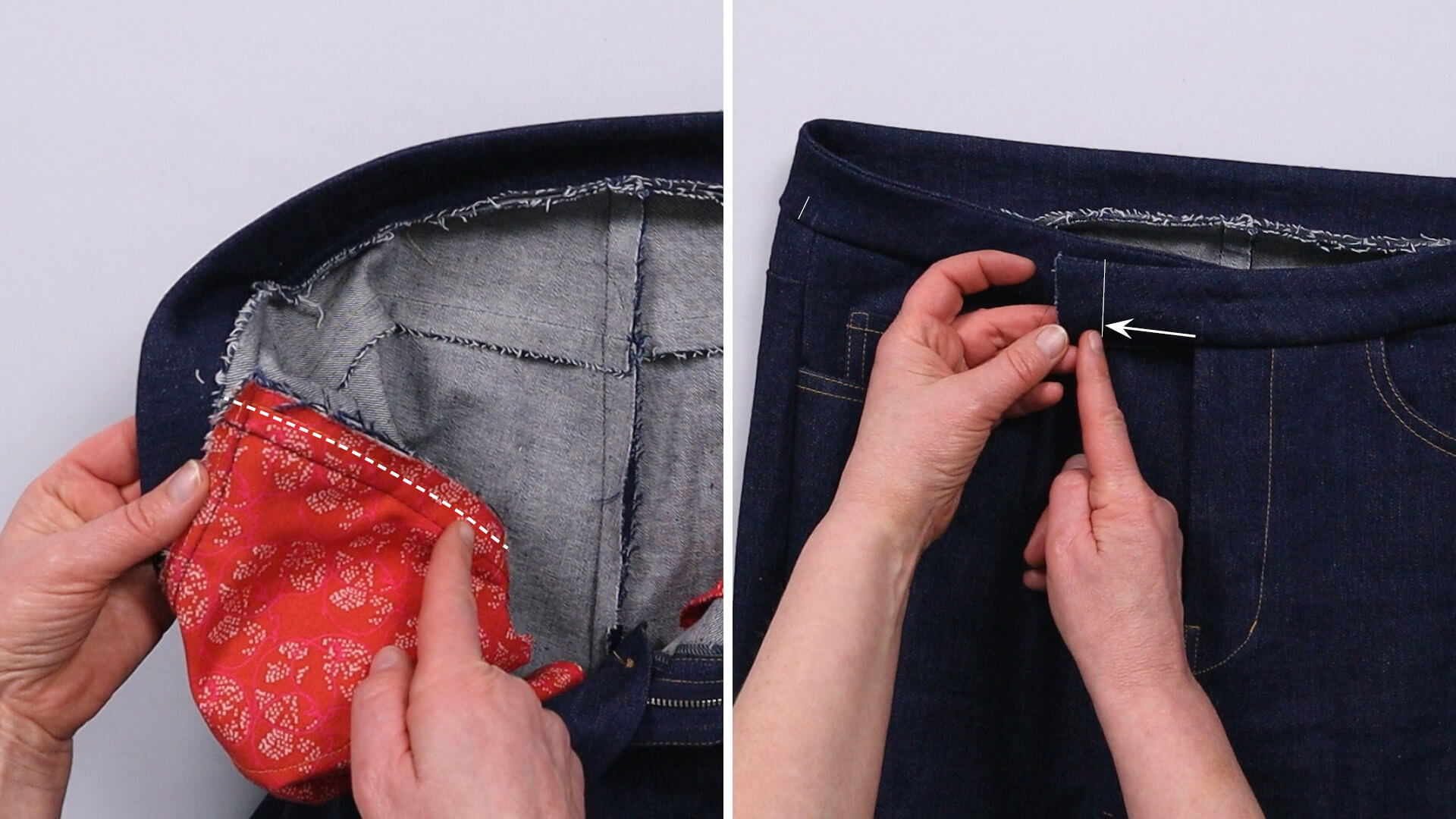
If you notice during the fitting that the waistband is too tight, you can let out the seam allowance at the side seam.
You can use the extra fabric on the left front side of waistband, which would otherwise be cut away, for the extension. The notches on the lower edge of the waistband are then also moved accordingly.
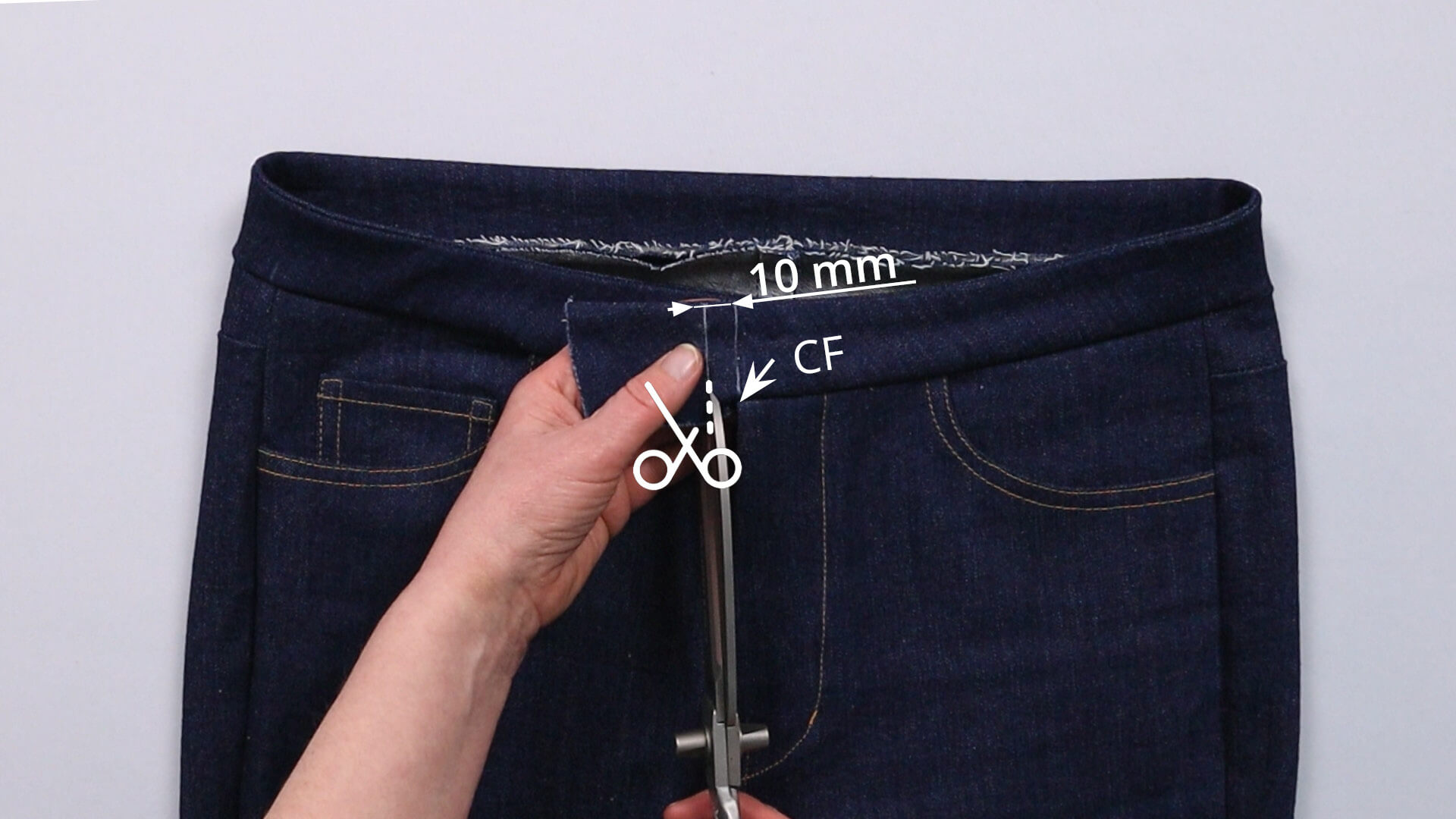
If the waistband width fits, mark 1 cm seam allowance at the left center front and cut off the excess waistband strip.
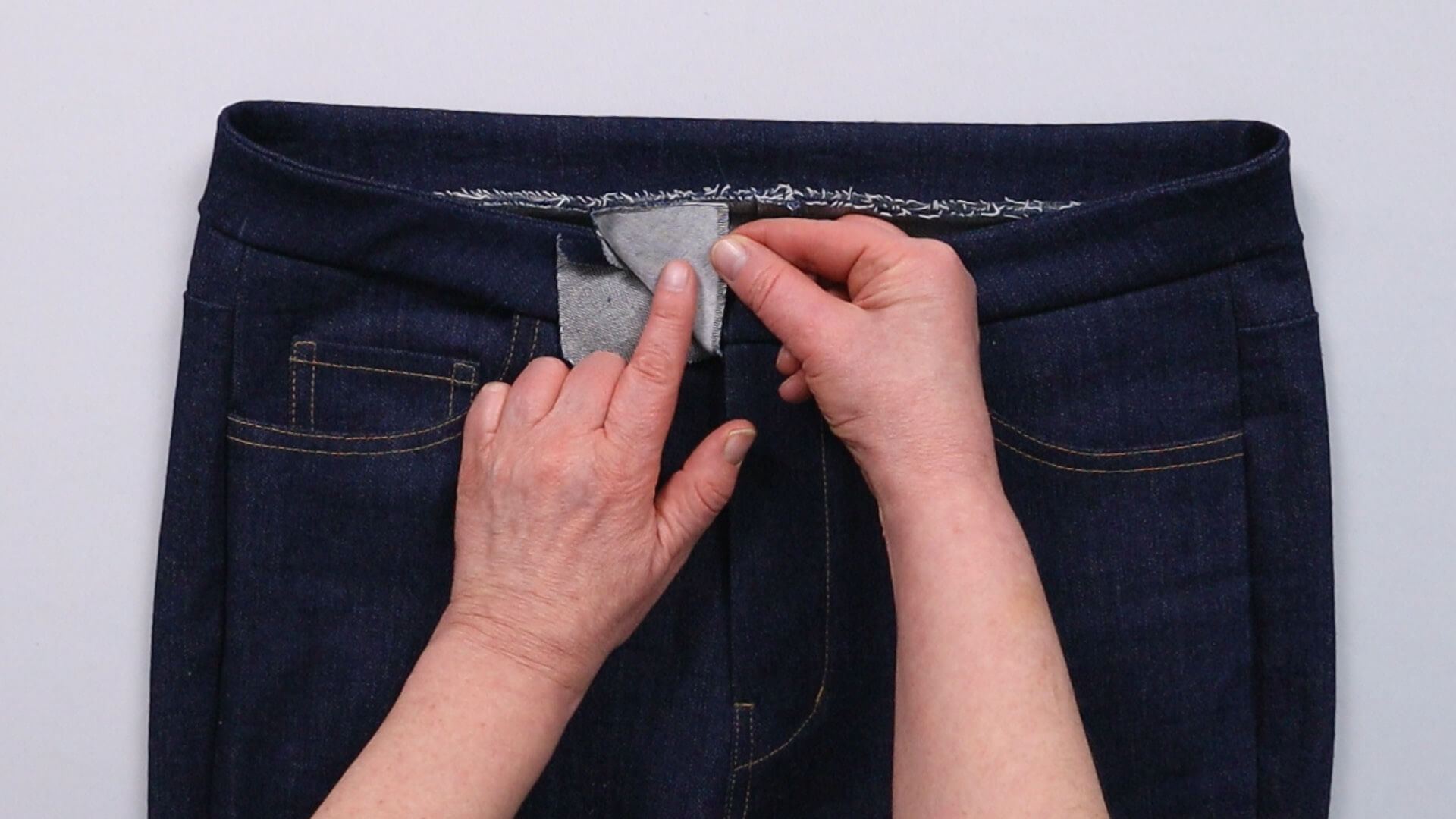
Before cutting, make sure that the interfaced outer side of the waistband is really on the outside.
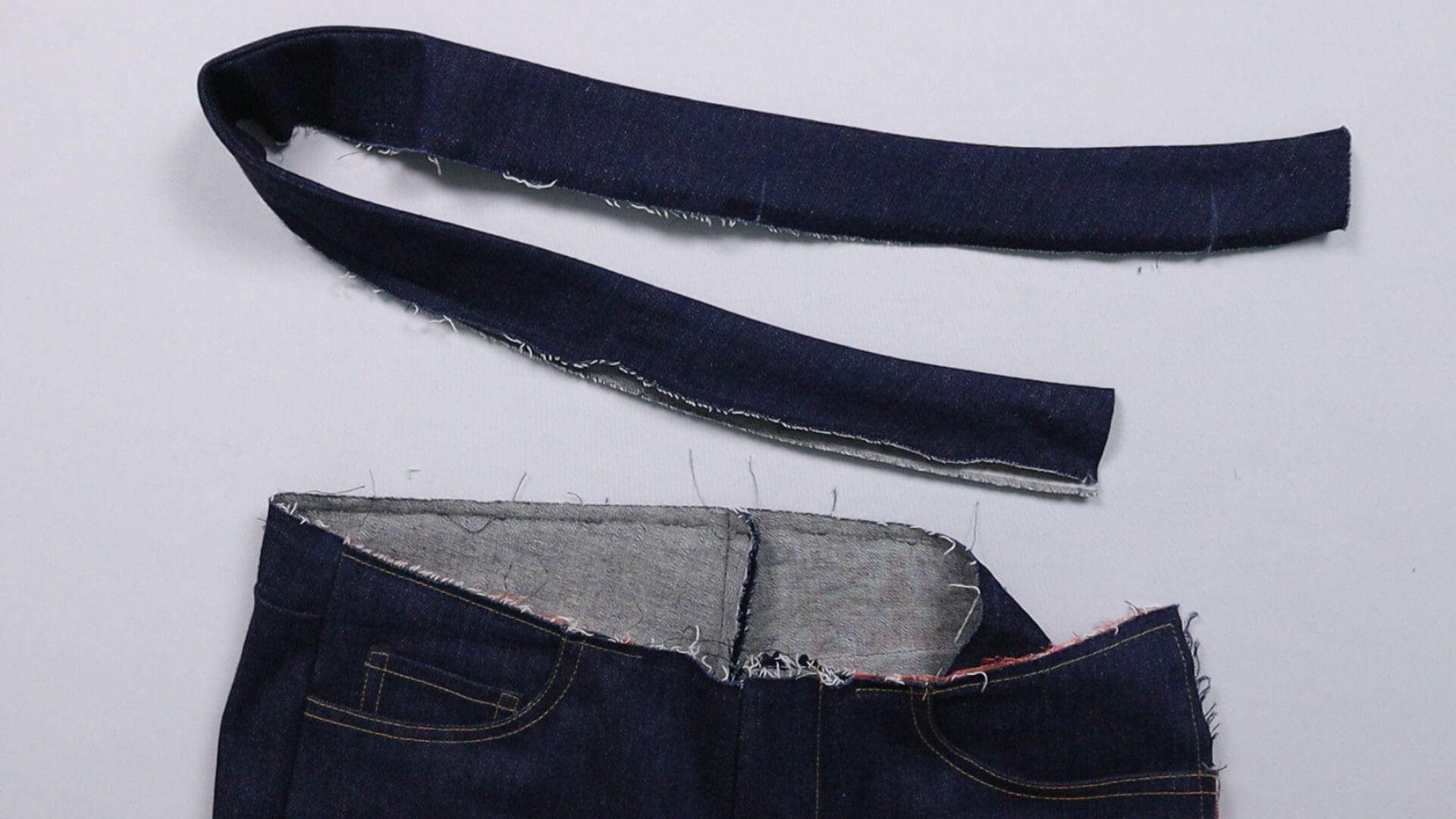
I now separate the waistband from the trousers.
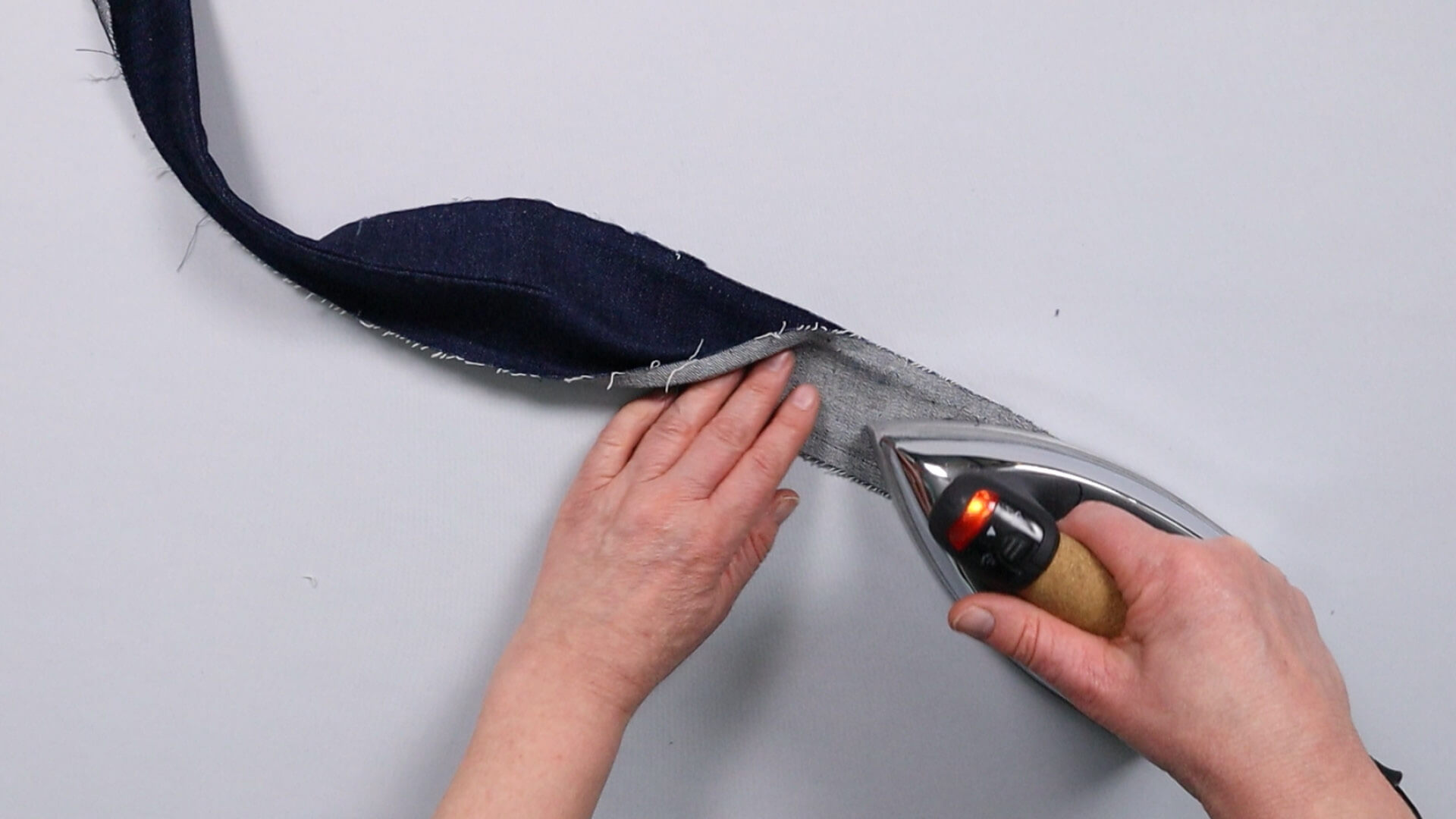
Then I lay it right sides together and iron it flat again.
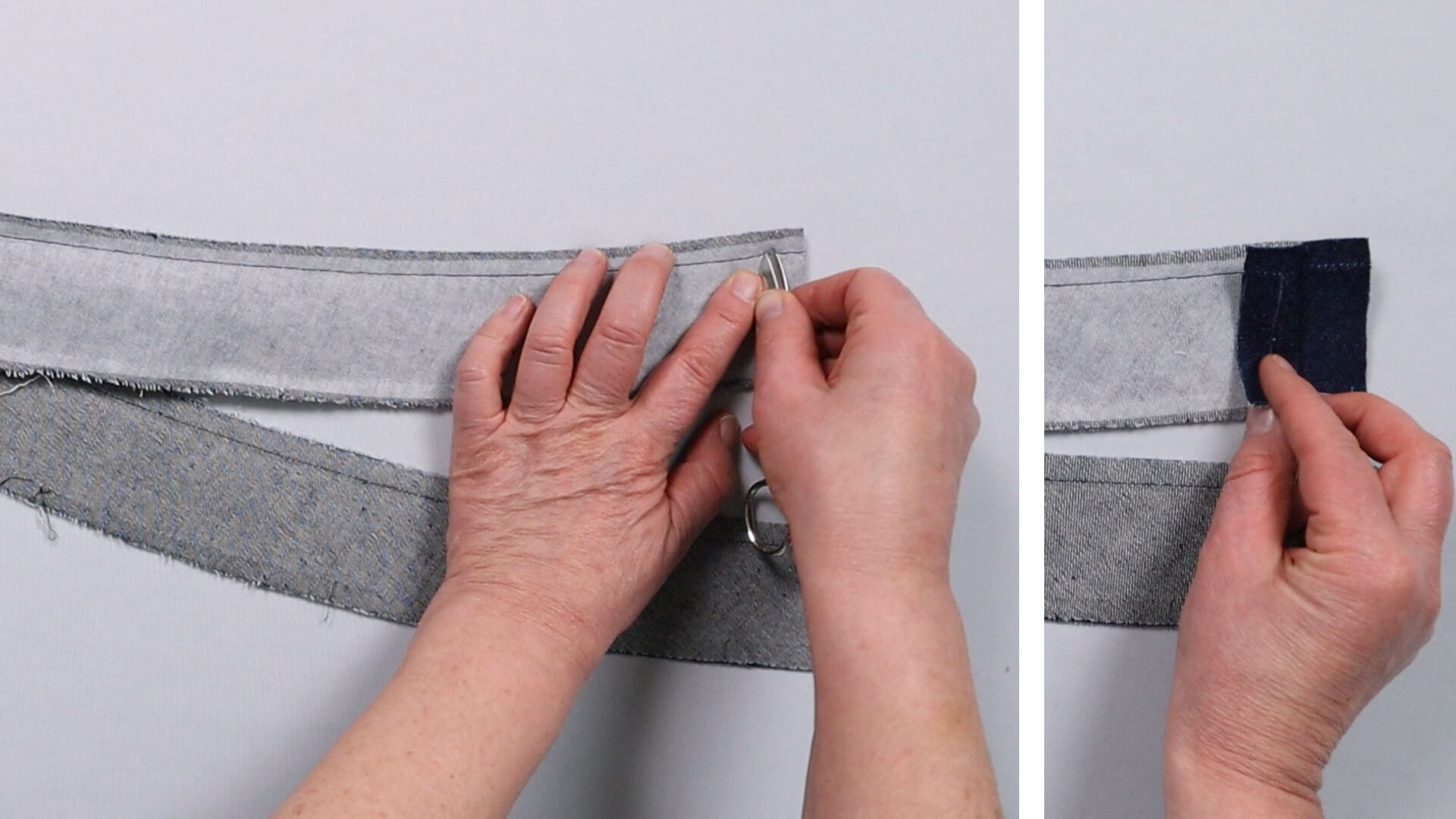
On the shortened left overlap side, I unpick the waistband seam by approx. 1.5 cm for later corner processing.
When you get to the instructions for sewing the waistband, you can start immediately at step 4.
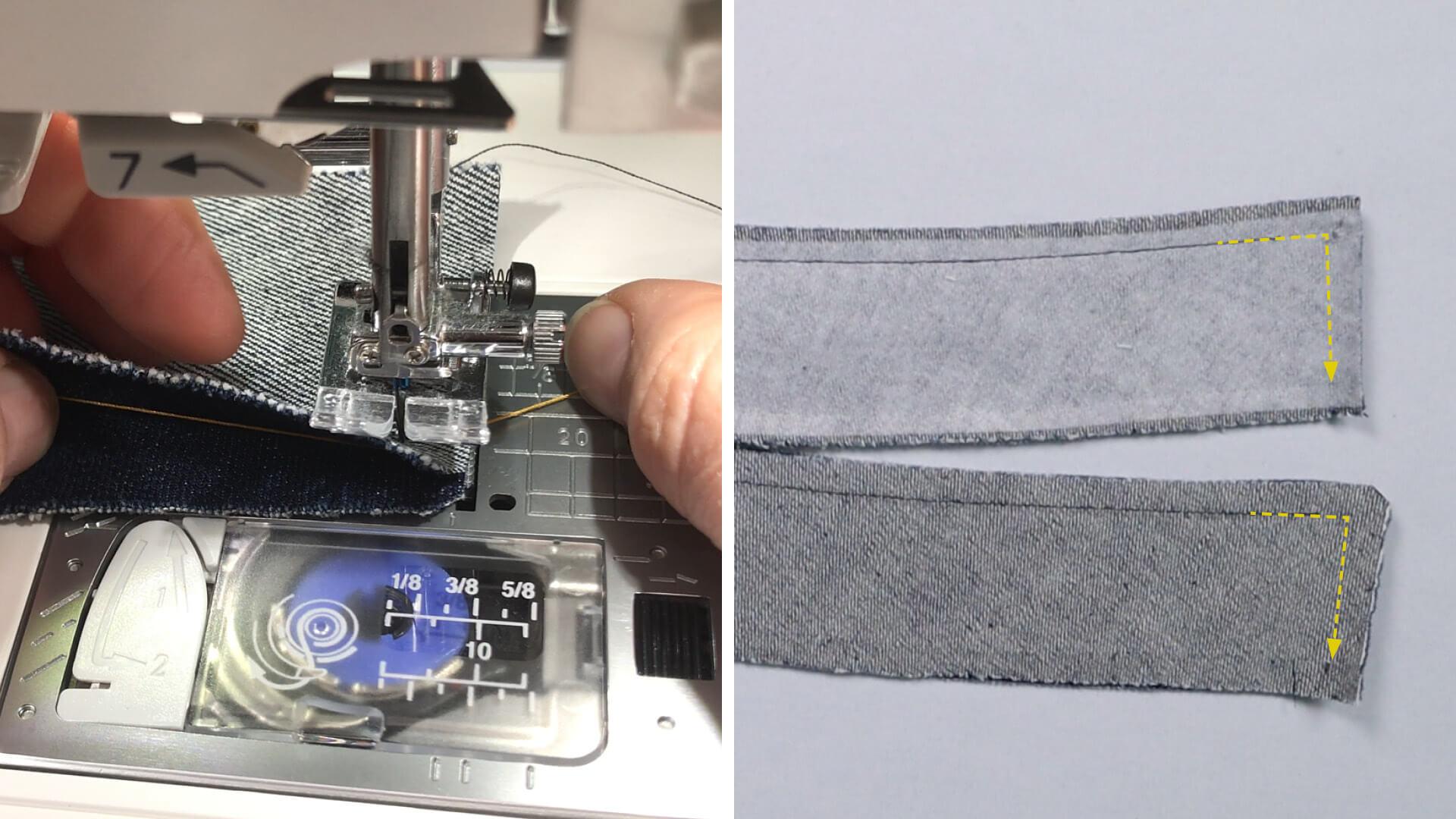
As the top edge of the waistband is already sewn together, you only need to sew the front edges together. Start at the top edge with a distance of approx. 3 cm from the front edge and sew the short edges together stopping 1 cm before the end.
If you need to make further adjustments to your trousers, transfer these to your pattern and take them into account for further sewing. I now separate the test trousers again and continue with point 4 of the instructions for sewing back yoke and seat seam.
Tips
Here are a few tips on what you should bear in mind when trying them on:
- The tighter the fit you have chosen and the less stretchy your fabric is, the more likely it is that the trousers will wrinkle at the back of the legs. This is because the trousers have an “extra length” at the back, which you need so that you can sit down comfortably.
- Wrinkles sometimes look worse in photos than they actually are. Be sure to take another look in the mirror to see what it really looks like.
If you still have problems with the fit, please send me an e-mail with pictures of the trousers worn (see above). Then I can give you a few more tips on adjustments if necessary. This works much better at this point than at a later date.
Here you can find the link to further instructions:
If you’re not quite ready yet and perhaps want to start at the beginning, you’ll find some links here:



